My Trip to Japan
Support this website by purchasing prints of my photographs! Check them out here.I recently took a trip to Japan. Currently I live in San Francisco as a Software Engineer, and grew up in the Midwest, which should explain the perspective of this post.
People and Culture
From what I've seen, Japanese people want to keep the world in at least as good of a state as when they found it. Take, for example, a plant growing next to a sidewalk. In San Francisco, someone is going to walk by, see the plant, decide they want to stomp on it. In Japan, that little plant is going to flourish. This doesn't just apply to plants, but also to fixtures on the sides of buildings, signs, walls that go without graffiti, mirrors that don't get keyed.
People tend to avoid being the center of attention. It is rare that someone makes a loud noise, makes a “scene” in a public place. This is sharply contrasted with San Francisco where people like to ride public transit while blasting a Bluetooth stereo or scream racist phrases at other passengers.
Smoking is still a big thing, in fact many buildings have smoking sections, trains have smoking cars, etc. Bars are more likely to allow indoor smoking, some restaurants seem to as well. You can even purchase cigarettes from vending machines.
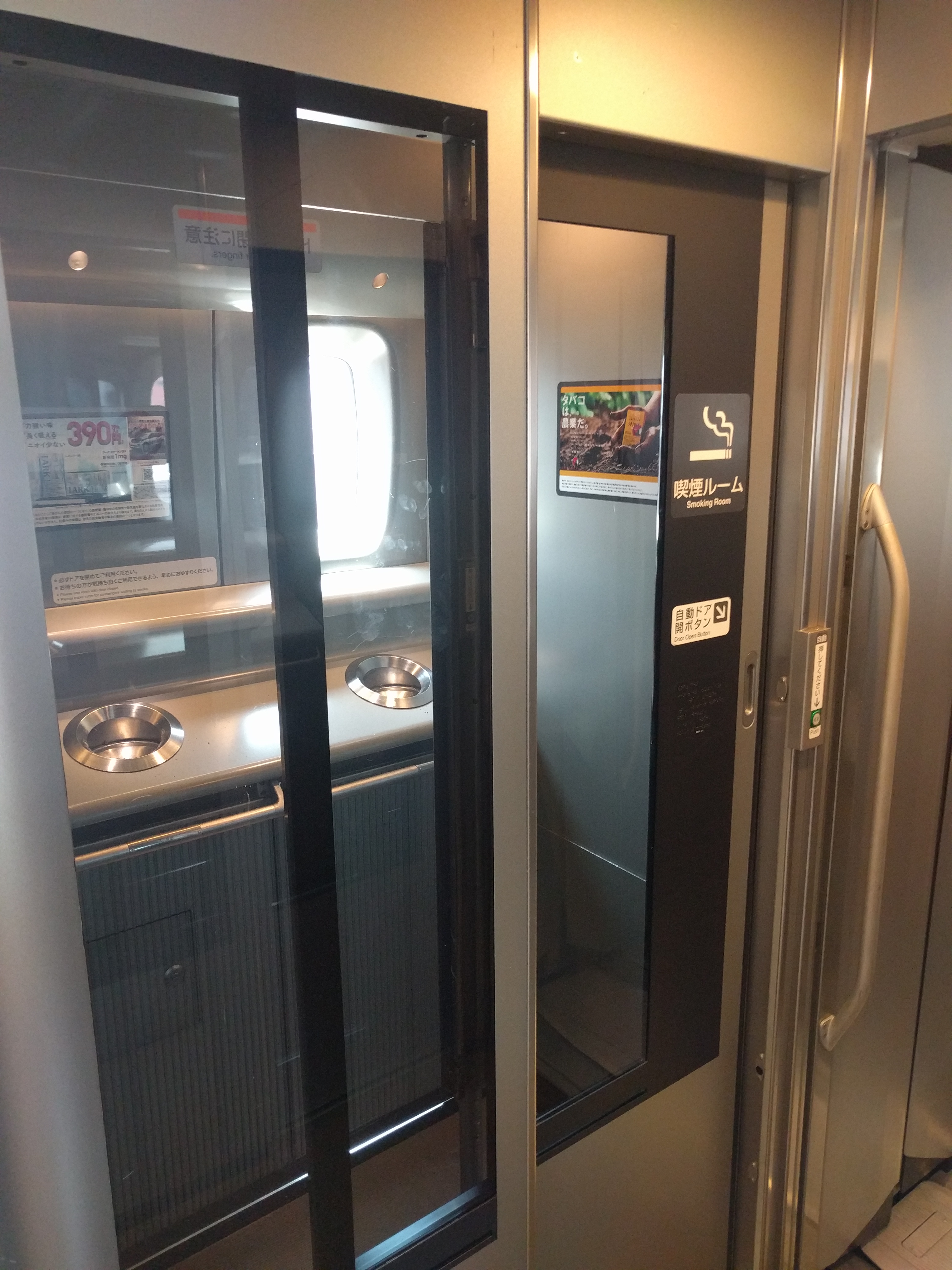
For the most part you won't get unsolicited advice while wandering around Japan. Perhaps if you're looking really confused and standing in the same spot for 10 minutes someone will come help. That said, if you ask for help, language barriers aside, you will receive it. While at a train station I asked one person if I was at the right platform, before I knew it three people came to my rescue.
Gaijin Party
There's a special word used in Japan to label people who are outsiders of Japan, Gaijin (外人). This word is most frequently used, lightheartedly, by Gaijin themselves. My buddy Daigo knows of a Gaijin named Michael. Michael is going to a party for members of the game developer community, mostly attended by fellow Gaijin, and I get an invite.
The bar is named 大衆割烹 藤八, located in the outskirts of Tokyo. This party has been recurring, and I believe at the same location, for many years. Shoes are not allowed inside of the building, you take them off when you first enter. The eating/drinking area of this bar is on wooden platforms elevated from the normal floor, and are covered in bamboo mats. The tables are very squat, one needs to sit on the floor cross-legged to use the table. I quickly discover I'm not able to cross my legs.
The people in the group and friendly and easy to talk to, many having moved from the US to Japan. Like me, many of them grew up loving Japanese anime (cartoons), manga (comics), and video games. Everyone has their own personal reasons for wanting to move to Japan.
In this group is an attractive Japanese woman. Michael tells me that she's currently looking for a man and asks if I'm interested in getting to know her. It is at this point I realize how different the dating scene is in Japan, people seem more open. In the States it's almost like people are more subversive, need to hide what their true goals are.
Inside this bathroom is an interesting surprise, it contains a pair of Crocs (a cheap made-for-TV waterproof shoe). People wear these shoes when using the bathroom to keep anything gross from getting on their socks and thus getting back on the seating area.
Walking around this area of Tokyo feels incredibly safe, a trend which continues throughout the rest of my trip.
Apartment Party (Yokohama)
This party takes place in a small apartment next to the Yokohama stadium (more about the apartment itself later). This party was a bit interesting, I must say. Everybody at this party was the same age group, being from 28 to 30. That said, the party felt much like a party one would attend in college. At one point there were two people making out on the floor.
The people at this party were very friendly, some were half Japanese, and some weren't Japanese at all. I think we're all friends now on Facebook, though I have no idea what they post half the time.
House Party (Yokohama Family)
Daigo's Brother's child is having her first year birthday at their family home in Yokohama.
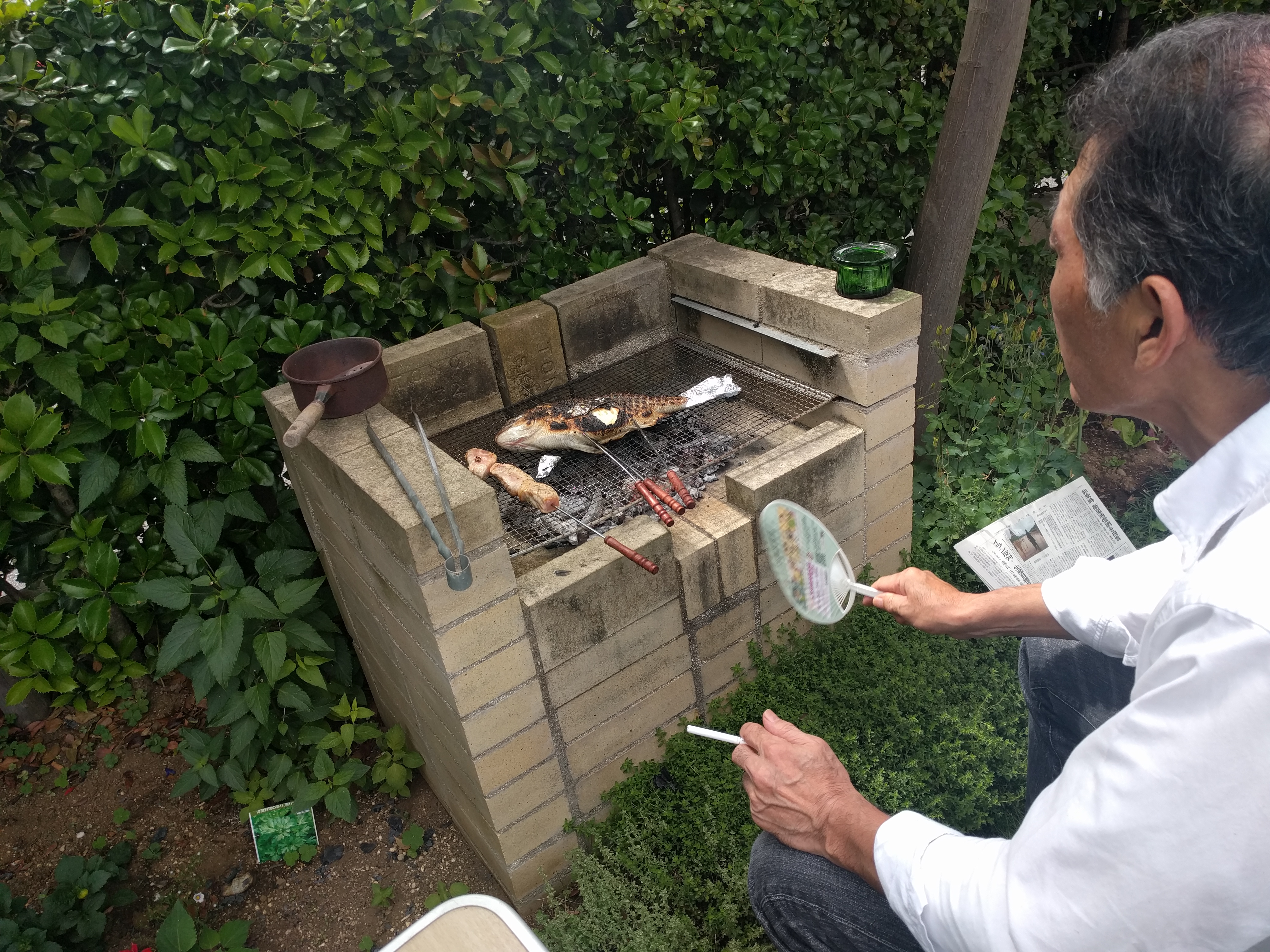
I mention that I come from Michigan and Daigo's father asks if I'm from Saginaw, which is referenced in an old Simon and Garfunkle song entitled America. We end up spending a lot of time reminiscing and playing old songs on YouTube. Most of the music we talk about is from the 60's and 70's, which is before my time by two decades, but I'm privy with the classics and it makes for good conversation.
Places
Akihabara (秋葉原)
Japan is a country, containing the Tokyo Prefecture, inside of that is the Chiyoda Ward, and inside of that is the Akihabara District. Akihabara is most commonly associated with nerd (Otaku) culture, containing many arcades and video game shops and other such establishments. Personally, I really like Akihabara for their Electronics and DIY shops, one of the things that has attracted me to this place since I was a kid.
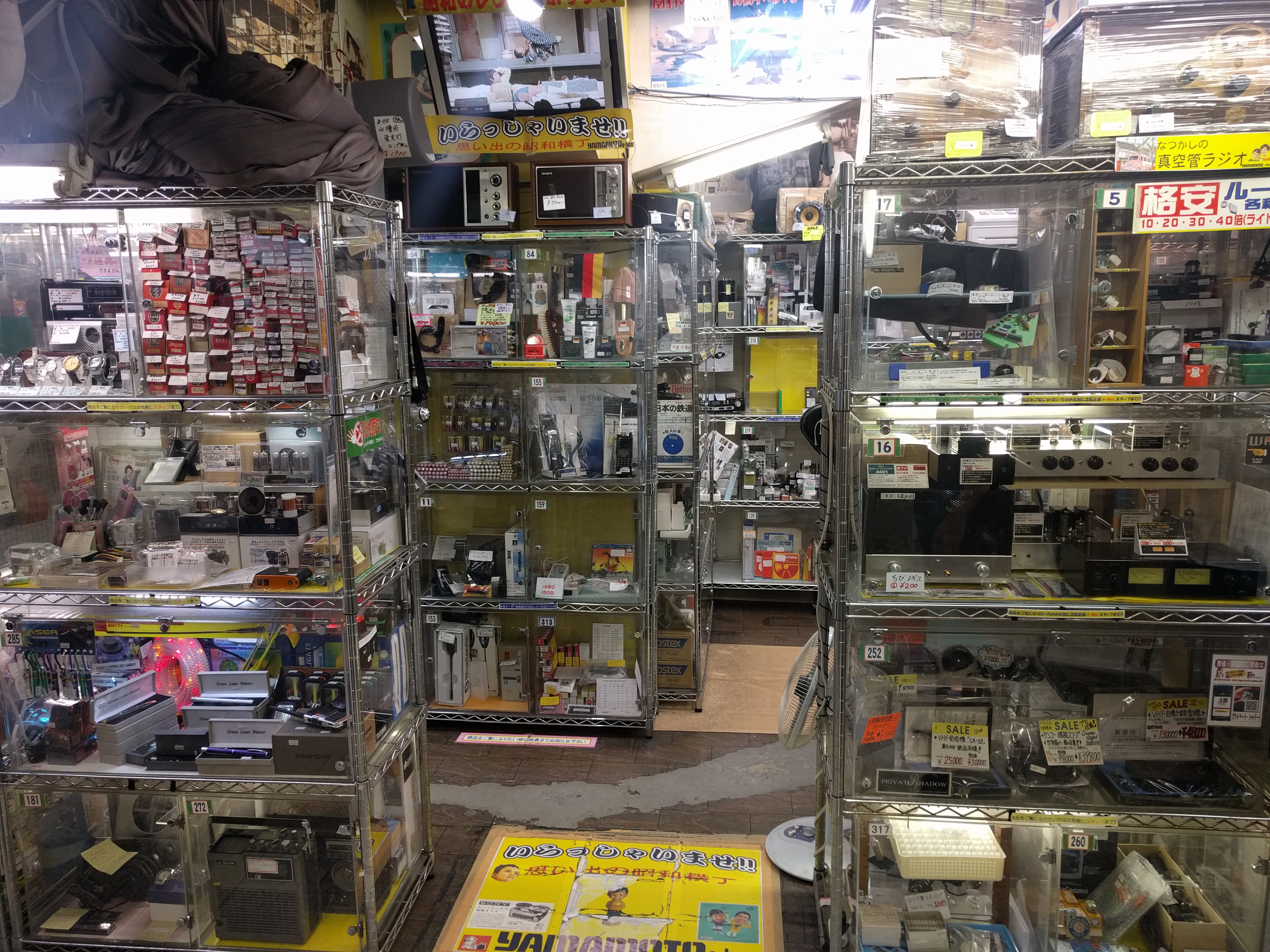
One notable establishment which can be found in Akihabara is called a Girl/Maid Cafe, a themed restaurant where the servers are women and they come and have conversations with you at your table. We went to a Mermaid Cafe, which is themed to be under the sea. Our waitress is named Momone, and while she doesn't look exactly like a Mermaid, she is definitely wearing a stereotypical maid outfit. Unfortunately I don't speak Japanese, though the rest of my small cohort does, so a long conversation ensues about our servers interests and adventures. I purchase a special drink, which costs a bit more than the others, but comes with a cute Polaroid which Momone and I pose for. She writes all over the Polaroid with markers, writing cute messages and drawing hearts, to help build the illusion that we are a cute (Kawaii) couple.
The arcades in Akihabara are filled with people playing games. I'm a big fan of Guilty Gear, but I can't find it in the arcade I'm in, so I instead settle for Blaz Blu, its cousin. This arcade, and many other buildings in the area, have very slow elevators and no staircases. If there were a fire I can only assume everybody would die.
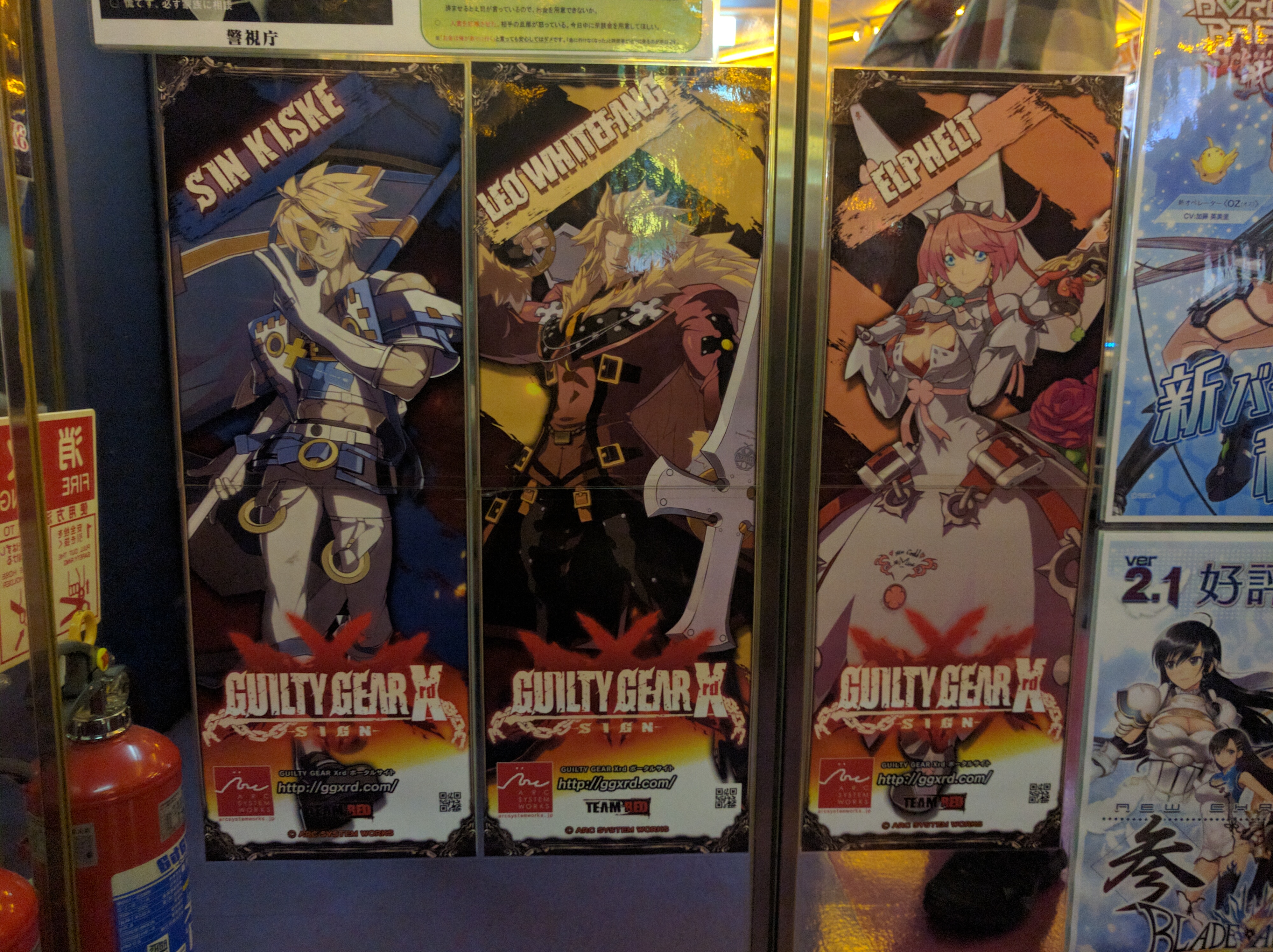
One of the shops I go to is several stories tall. The first story contains modern console video games, the next stories contain retro console games. One story is dedicated to movies, while another to board games. Near the top of the building things get interesting, with stories dedicated to pornography as well as computer sex games. One of these floors has a Gacha machine, wherein you put 400 Yen (~$4) and receive a random sex toy in an innocuous container. I purchase one as a souvenir for a friend back in the States, though I haven't yet asked how it went.
When riding between cities, the trains are very packed. In these trains one will find many Japanese Businesspersons, who mostly appear sad and tired. This offers a sharp contrast with the whole “Kawaii” culture which is especially prevalent in Akihabara.
Kyoto (京都市)
To travel from the Yokohama / Tokyo region to the Kyoto area, one must first ride in a Bullet Train (Shinkansen, 新幹線).
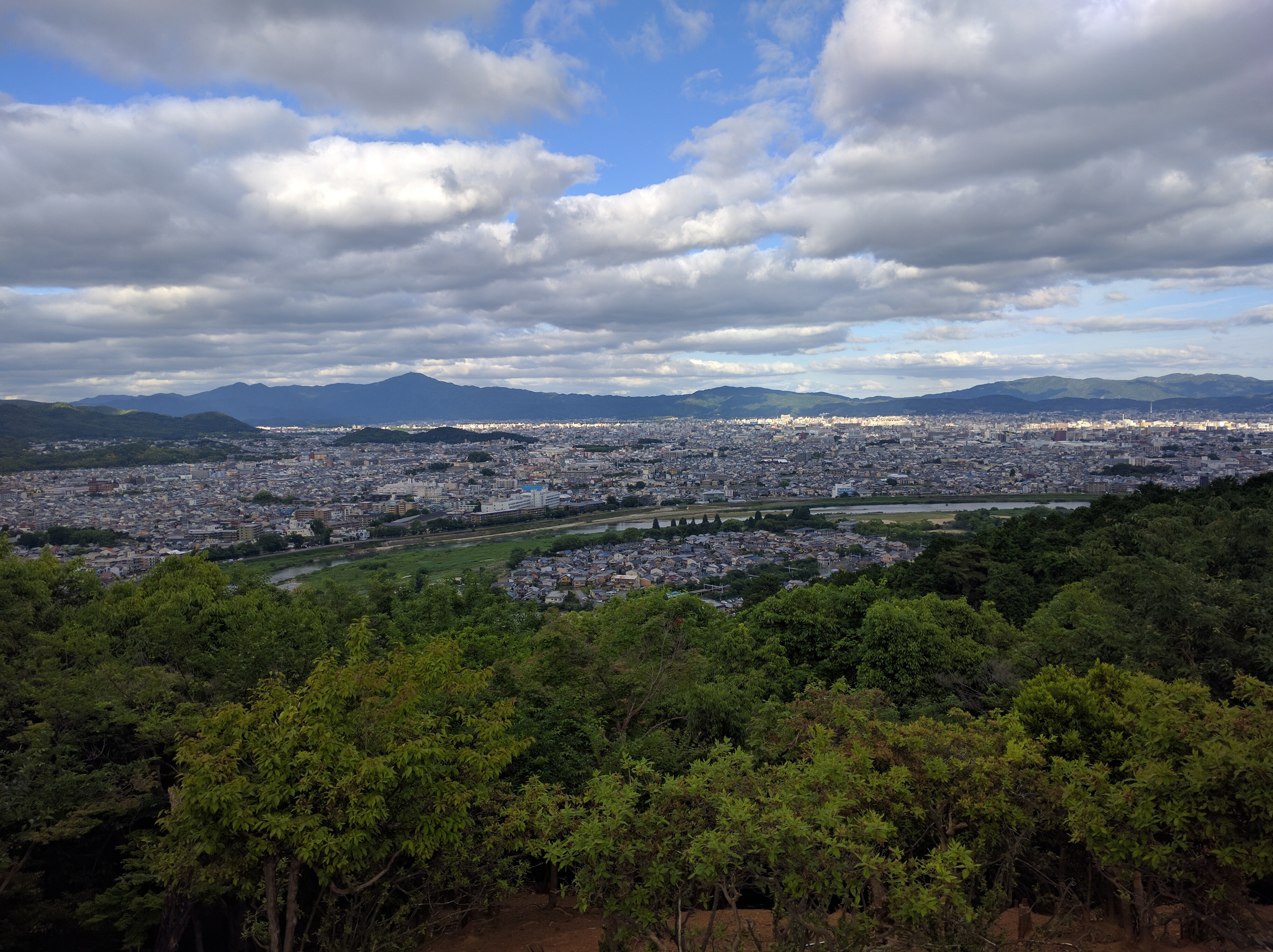
Kyoto is very Tourist friendly, and there are many of us Gaijin around. Interestingly, this ended up making Kyoto not as fun for me. Shrines are located everywhere in Kyoto, and they typically have free admission. The impressive Kyoto Imperial Palace, which had a guided tour, required that I register a day ahead of time and (I believe) a background check was performed.
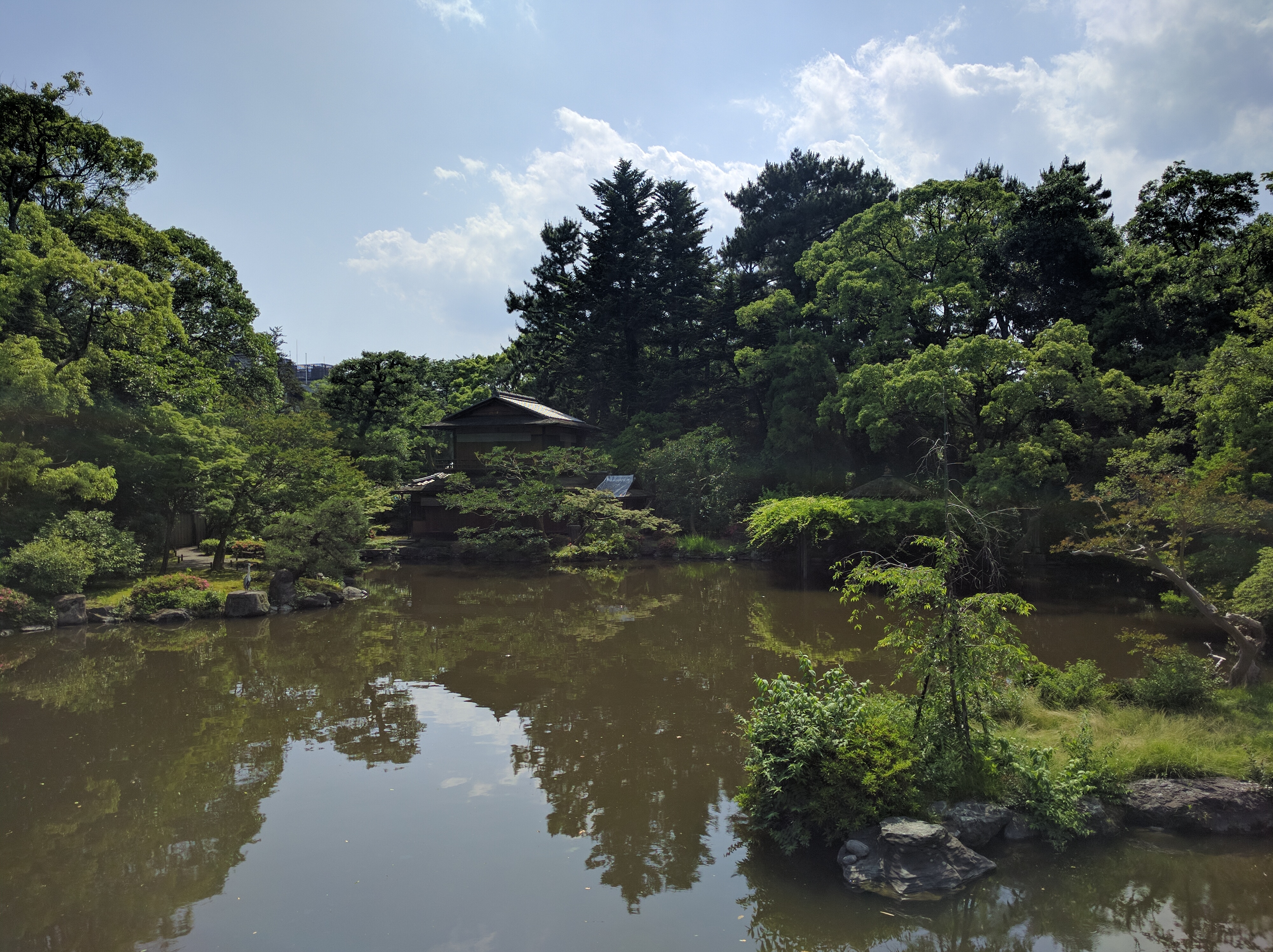
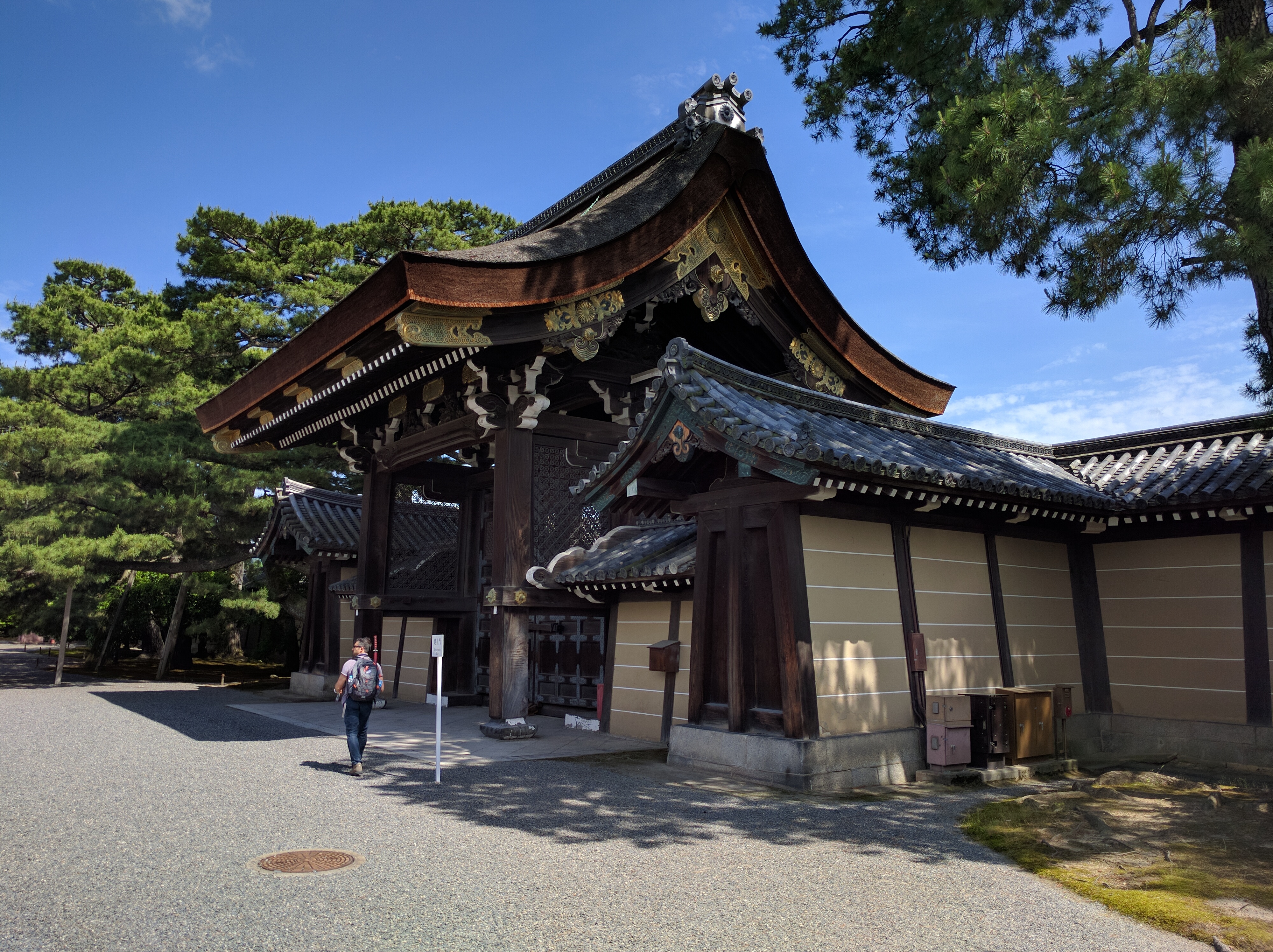
Kyoto is quite a bit more organized than most of Yokohama, with the city being laid out on a grid with large roads being interspersed by smaller roads. In Japan, the buildings touch the streets, there aren't sidewalks in many areas.
There are places around here called Love Hotels, which are hotels which one pays to stay for a few hours. There are similar places in America, but we just call them seedy hotels.
Beer is expensive here, typically I'm paying between $7 and $10 for a pint of beer. San Francisco isn't too different, but most other things in Japan are cheaper than SF.
My first night in Kyoto I went to a convenience store with the plan to stock up on supplies for a run the following morning. Locating calorically-dense food is a bit difficult, but I eventually find something which tastes like what I imagine the Elven bread from LOTR tasting like; chalky and flavorless. I find a bottle of “Oral Hydration”, which as far as I can tell is a bottle of medical-grade saline. The next morning I go running up and down the Kamo River, the night before being full of drunk college kids, but now is calm and serene. At 9am the air is still and very warm. I share the trails with an occasional squad of school kids running for PE class and Japanese businessmen taking the scenic route.
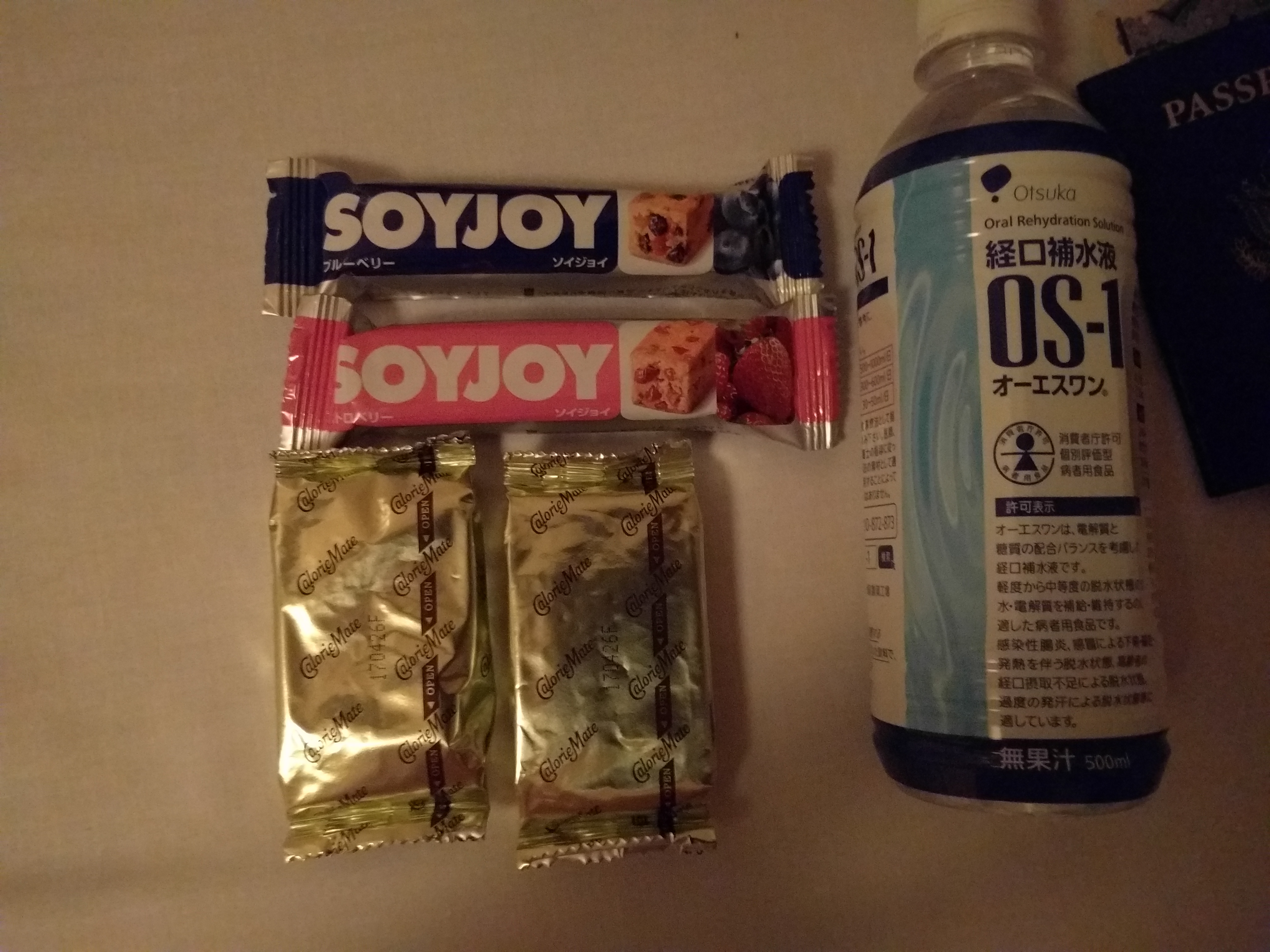
I end up staying at a Capsule Hotel for 3,300¥ ($30) per night. These hotels require you leave your shoes up front in a locker. The bathroom / shower area is shared amongst people of the same gender. The beds are “capsules”, embedded in the walls, and are about 7ft long, 3ft wide, and 3ft tall. The sleeping rooms contain many capsules, perhaps around forty, and each one has a shade which can be drawn over the enterance to keep people from looking into capsules. However, it is relatively easy to hear ones neighbors.
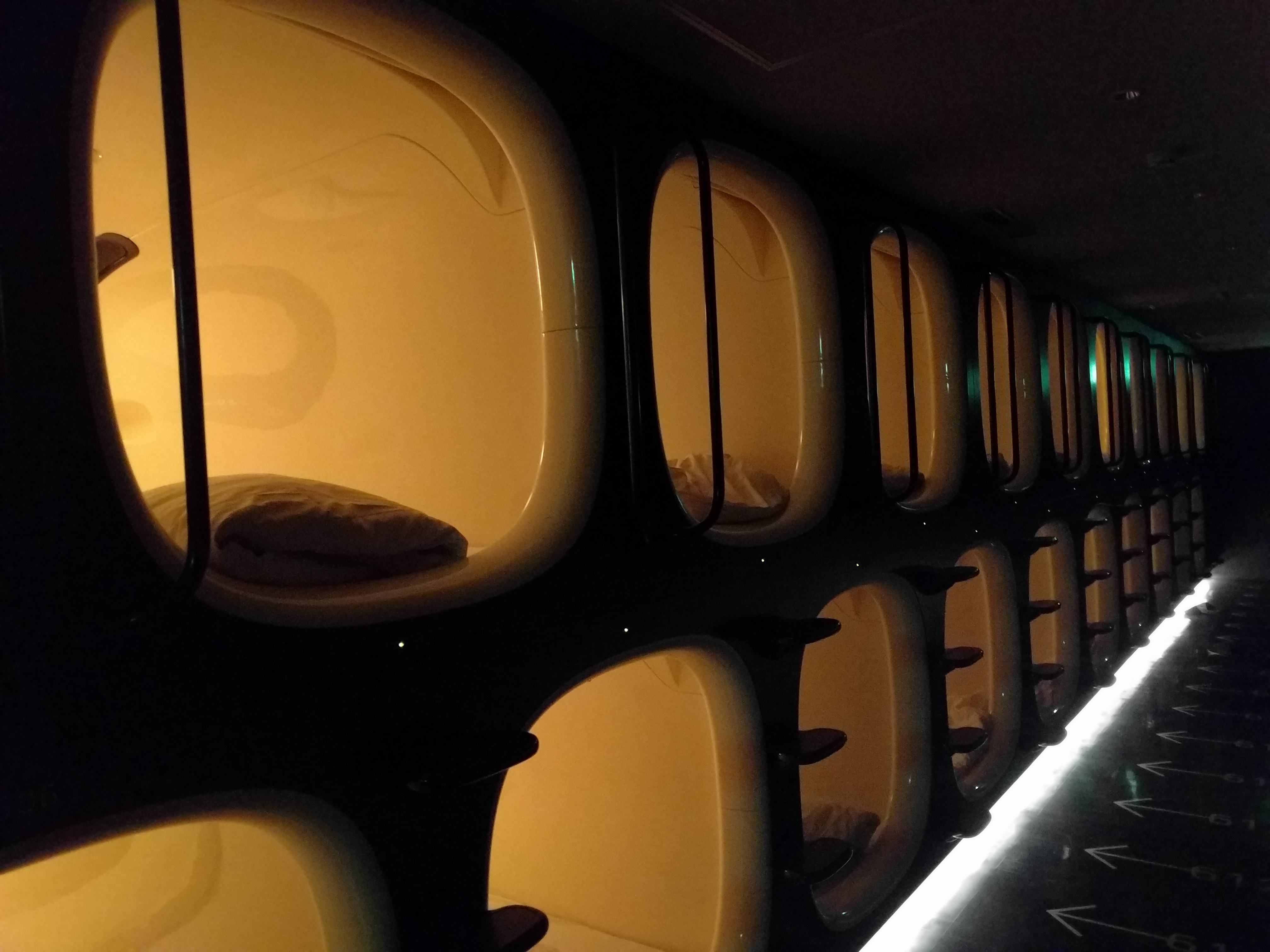
At one point I get lost while trying to find my way to the Arashiyama Monkey forest. I hop on a bus, and attempt to pay my fare at the coin machine, however the coin slots are closed. I ask the driver how to pay, and show that my coin will not fit into the slot. The driver simply stares at me, which was really the only case of a Japanese person not helping me during the trip. Obviously something isn't right, so I pull out my map and try to figure out what's going on. The bus I'm riding on is in a rural part of the city, and there aren't any Romanji names (Roman ABC characters), so I'm unable to follow where I'm going. Eventually I look around and realize I'm on what is quite obviously a special bus, so I hop off and walk to the nearest train.
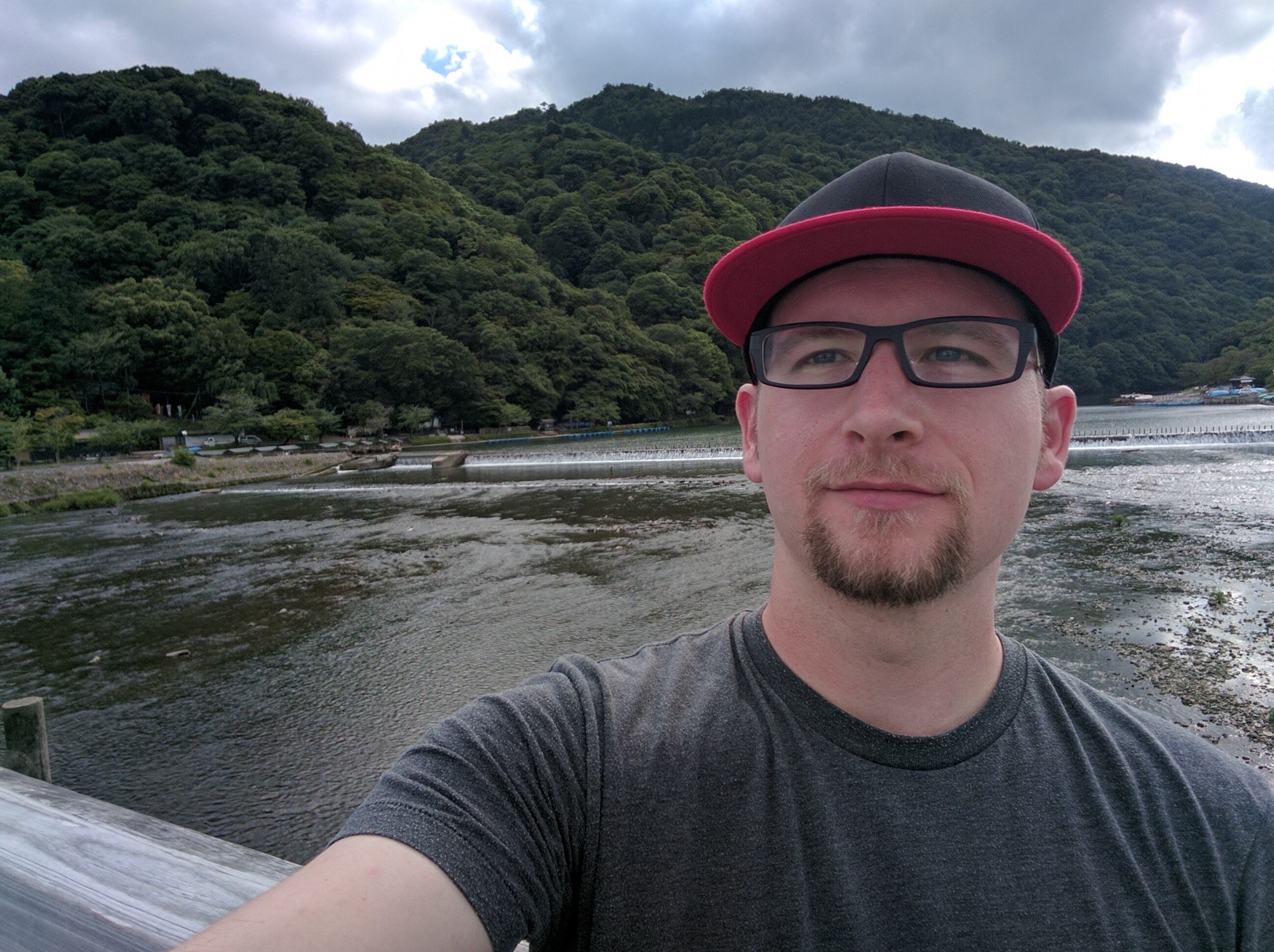
Almost all shops in Japan have tax included in the price. Kyoto has many exceptions to this which I'm guessing is due to the large number of tourists. I'm assuming this has something to do with tourists being able to get refunds on taxes, but I'm not sure.
At one point I'm wandering through some neighborhoods, getting a feel for architecture and what typical life must be like, when I find a large parking garage. This garage is a few stories tall, but doesn't have floors. Instead, each car has its wheels parked on steal beams. An automated crane moves around, finds the car which a person has requested, picks it up, moves it around much like a conveyor belt vending machine, and eventually places the car on the ground.
One morning I'm walking down the street and four people approach me, one holding a large mic and another a large video camera, and ask to interview me for television. They ask me to use an app on a phone which does Japanese to English translation via inaudible high-pitched frequency sound. I tell them it's neat, and that sure, I could see this helping a foreign person out.
There's a combination Bouldering and Karaoke bar. There are night clubs with bouncers ushering passer-by's inside. I go to a dive bar with low tables and bamboo floors and sip Asahi beer and munching on Agadashi Tofu while sitting next to a group of old ladies.
Osaka (大阪市)
Osaka is out of the way from Kyoto for heading back to Yokohama, but I figured I'd swing by for lunch anyway. There aren't as many tourists in Osaka, save for the Osaka Castle, which I ended up visting.
The buildings are noticeably different than the other cities I've been to, though I don't know how to explain it with words. I happen across a vending machine which sells beer for about 200¥ a piece, making them the most affordable beers I've seen in Japan.
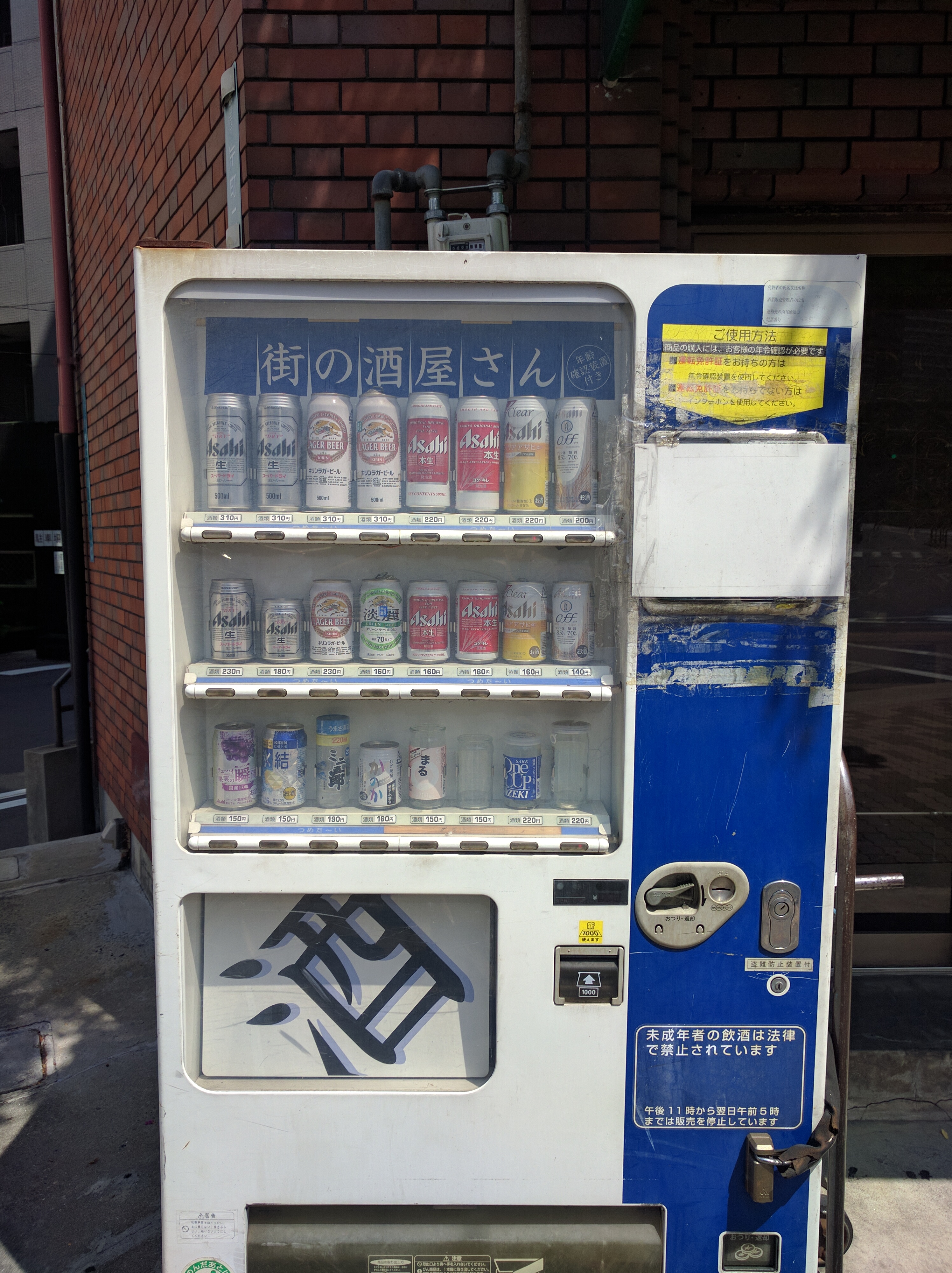
Yokohama (横浜市)
This is the area I slept most of the trip, save for the two nights in the Kyoto capsule hotel, at Daigo's family home (more on that later). It's a large region not too far from Tokyo, with plenty of parks and train stations and endless neighborhoods. The area is safe, after about 10pm there isn't a sound to be heard.
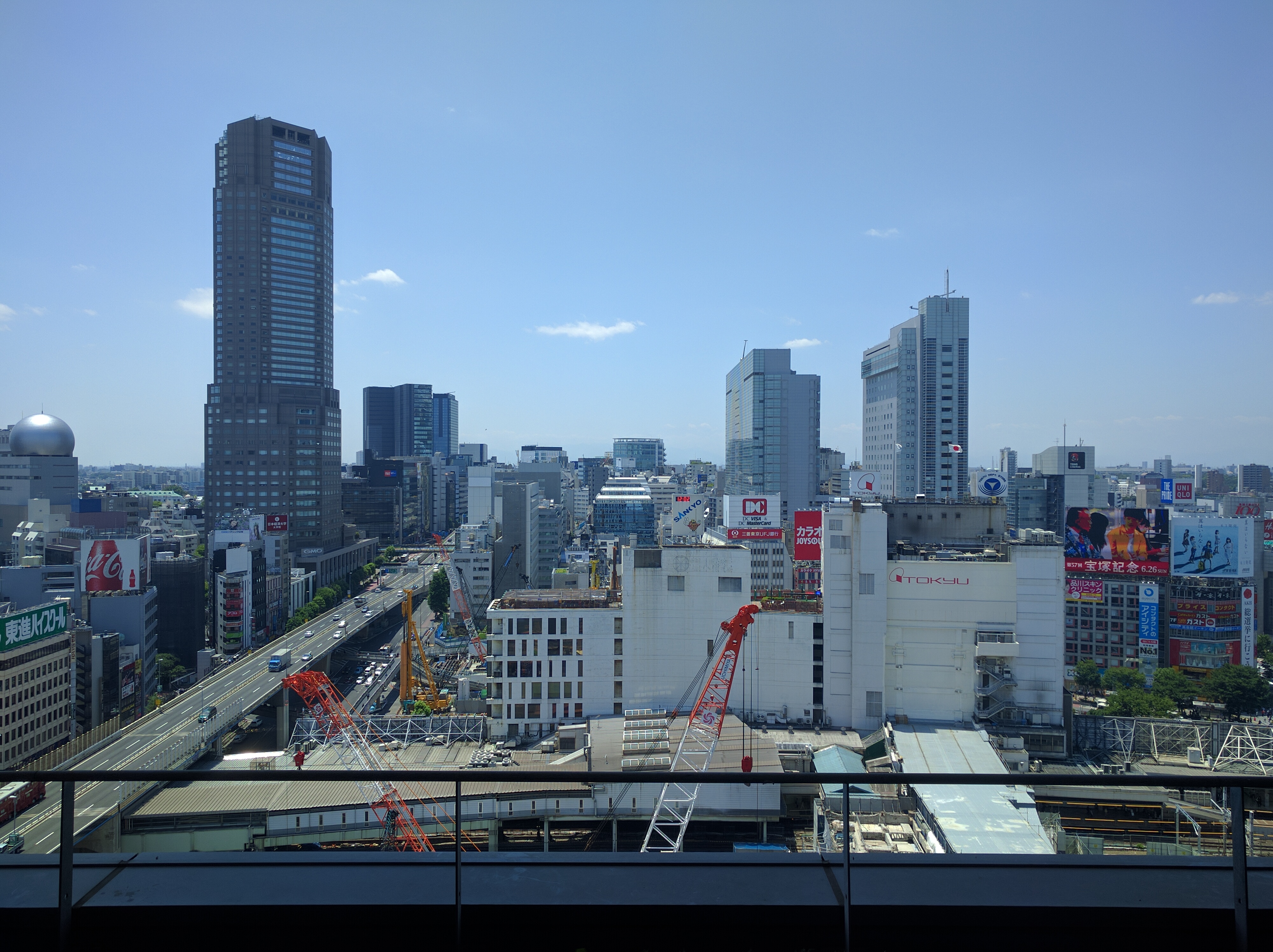
Zushi (逗子市)
Zushi is a neat small area on the southern part of Japan, next to the ocean. From what I can tell it's a pretty big vacation spot, though mostly for locals. Daigo, his father, and I stop for breakfast on the way to their vacation home and get a pretty good view of the beach. People on Windboards skip around the waves while kids play on the beach.
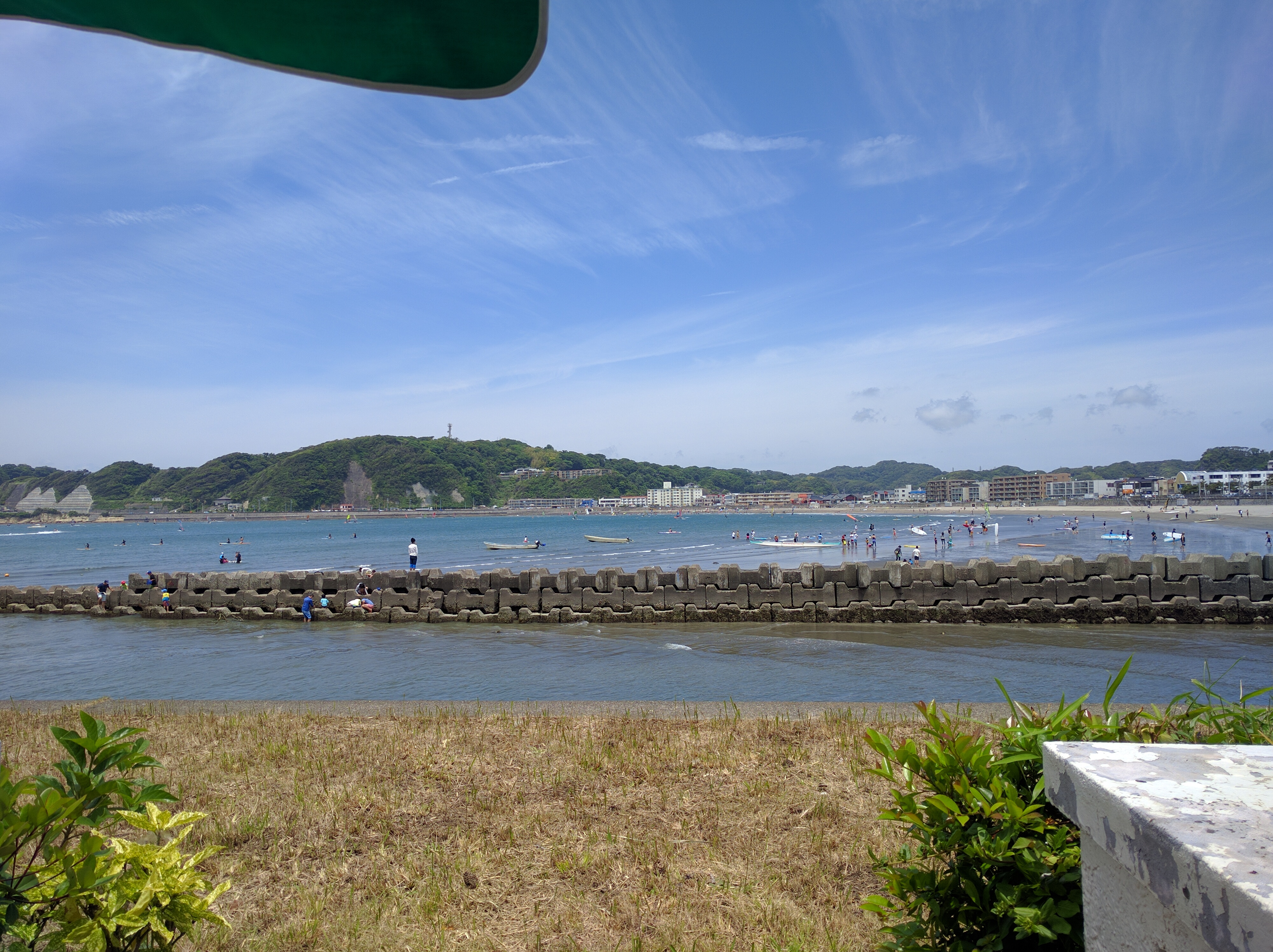
Later we hit up the beach. I'm a big fan of beaches, not so much swimming in them, but combing them for shells and coral and other such treasures. Some of the shell-dwelling creatures that live in the ocean around here have “doors” which they can open, and these doors are scattered across the beach. I've never seen anything like it before, they almost resemble small sand dollars, and I pocket a bunch.
I end up purchasing a pair of jeans from a small shop in Zushi (the only shop which sells Jeans from what I could tell). They cost about $70 USD, and the material is stretchy and quite comfortable. None of the jeans listed their lengths, though they did use the western waist notation in inches. The jeans I found were too long, and I asked if they had shorter ones. The shopkeeper told me that they would hem the jeans, for free, in the shop, and that I could come back in twenty minutes and pick them up! I've never encountered service like that in the States.
Roppongi (六本木)
Roppongi is a sort of clubbing neighborhood in Japan. We find a bar crawl event for the area and tag along, purchasing tickets online. The first thing I notice about Roppongi is how most of the people going to the bars and clubs are not Japanese, mostly tourists. We go from bar to bar to club, each one louder than the last.
At one bar and English Japanese girl convinces yours truly to dance on one of the tables while she dances on the other. Also this night, while drinking from a glass bottle, someone smacks it into my teeth, causing it to chip (making it the third time this has happened)!
Roppongi was “Too Gaijin” for me, it really felt like the crowded noisy clubs back in the States, and was an interesting contrast to an otherwise chill Japanese trip.
Onsen (温泉) Hot Spring
An Onsen is a Japanese Hot Spring, where in days past small “villages” and shops would be built around. The Onsen we go to outside of Tokyo is entirely indoors, but still has the traditional shop / village vibe going on. Nobody with tattoos are allowed to enter an Onsen, a rule which appears to apply to all Onsen. As far as I can tell I'm the only Gaijin at this Onsen today.
When you first enter the Onsen, you put your shoes into a locker and keep the key with you. You then go to the front desk to register and pick up a Yukata (a traditional robe with a belt). Then you go into a gendered locker room, put your shoe key inside, and change into the Yukata. From here you go back into a shared gender “courtyard” area.
The courtyard contains many shops and restaurants and even games like one would see at a Circuis. None of the shops accept Yen, you instead have a waterproof bracelet with a barcode, and you later pay for purchases when you check out. Currently there is an Anime (Japanese cartoon) which is very popular among the youth, and this Onsen has partnered with the creator to offer different games and prizes themed around the Anime. These games have very long lines of Japanese girls who want to win and show off their prizes.
After the courtyard you can go to gender specific locker rooms where you disrobe from the Yukata, shower off any sweat and dirt, before going to the actual Hot Spring. The Hot Springs don't smell like Chlorine, so keeping them clean is very important. There are booth indoor and outdoor hot springs here.
Indoors, there is a 90° C Sauna (nearly boiling) and a 20° C pool (nearly freezing). I take turns going from one to the other. Sweat pours from my face while I'm in the sauna, and I can only really stand being in there for a few minutes at a time before getting dizzy. Getting into the cold pool is a slow process, with lots of teeth chattering and swearing and weird looks from the natives.
Transportation
Trains
The trains here are amazing. Unlike San Francisco, they don't make horrible high pitched screams, they aren't covered in hobo urine, they are on time, and they run through stations every five minutes. The trains even have racks above the seating areas where one can leave their bags. In SF, your bags would disappear if left on one of these racks.
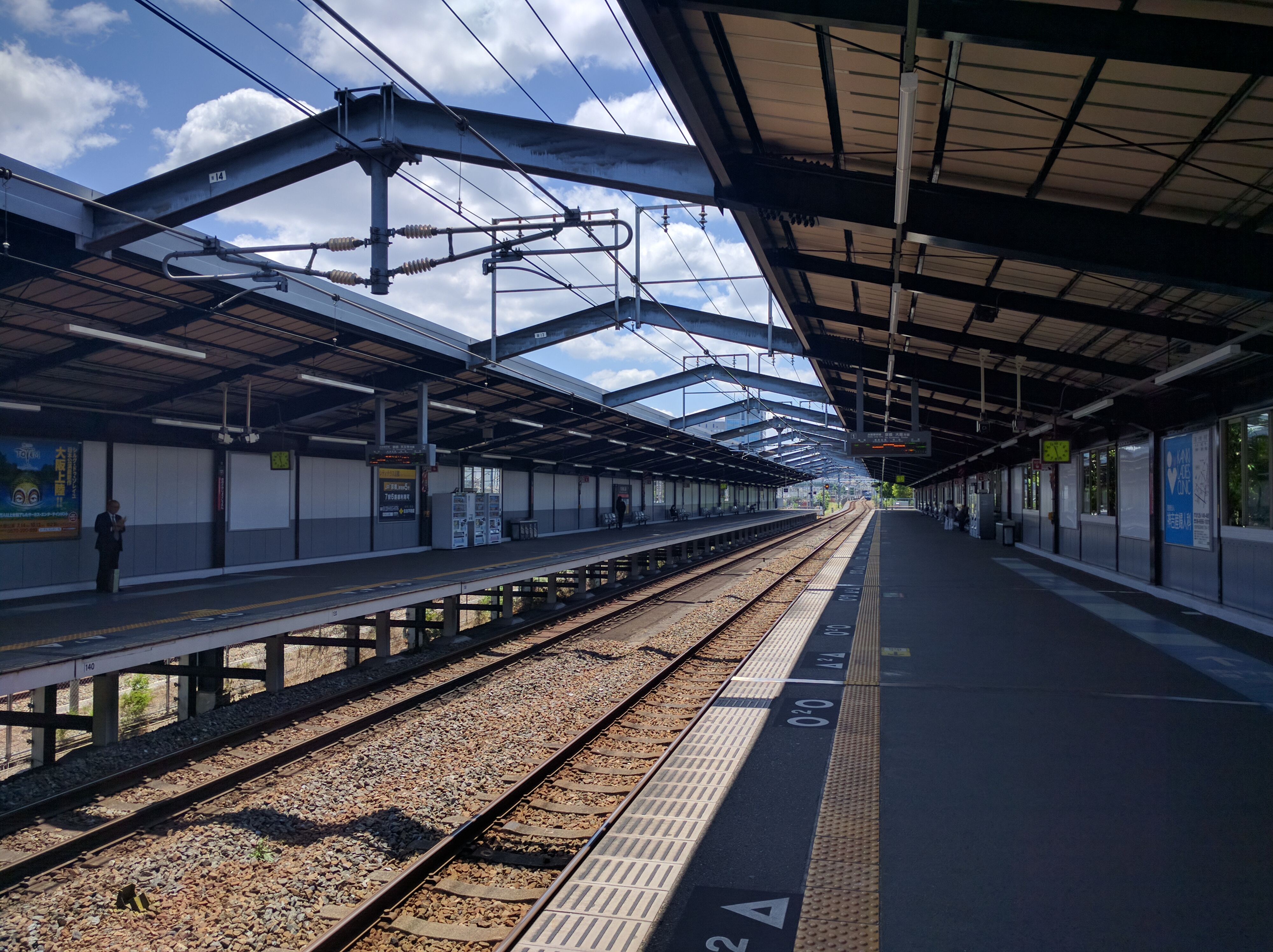
Traveling from city to city is surprisingly easy considering I don't speak or read any Japanese. This is all thanks to having a phone which works in Japan (Google Nexus 5X) and having a carrier which works in Japan (T-Mobile). If cities didn't have the Romanji versions of names, I wouldn't have been able to enter them into a map, but luckily Romanji is everywhere in urban areas.
Shinkansen (新幹線)
The Shinkansen is a Bullet Train which I take from the Tokyo region west to the Kyoto region. This train travels very fast and includes a nice view of Mt Fuji as it travels. Purchasing tickets for the Shinkansen at a train station is very similar to purchasing tickets for an airplane, minus all the painful TSA security checks. They do cost a surprising amount though, each one way trip was about $140 USD. That said, they are effectively the same as taking an airplane.
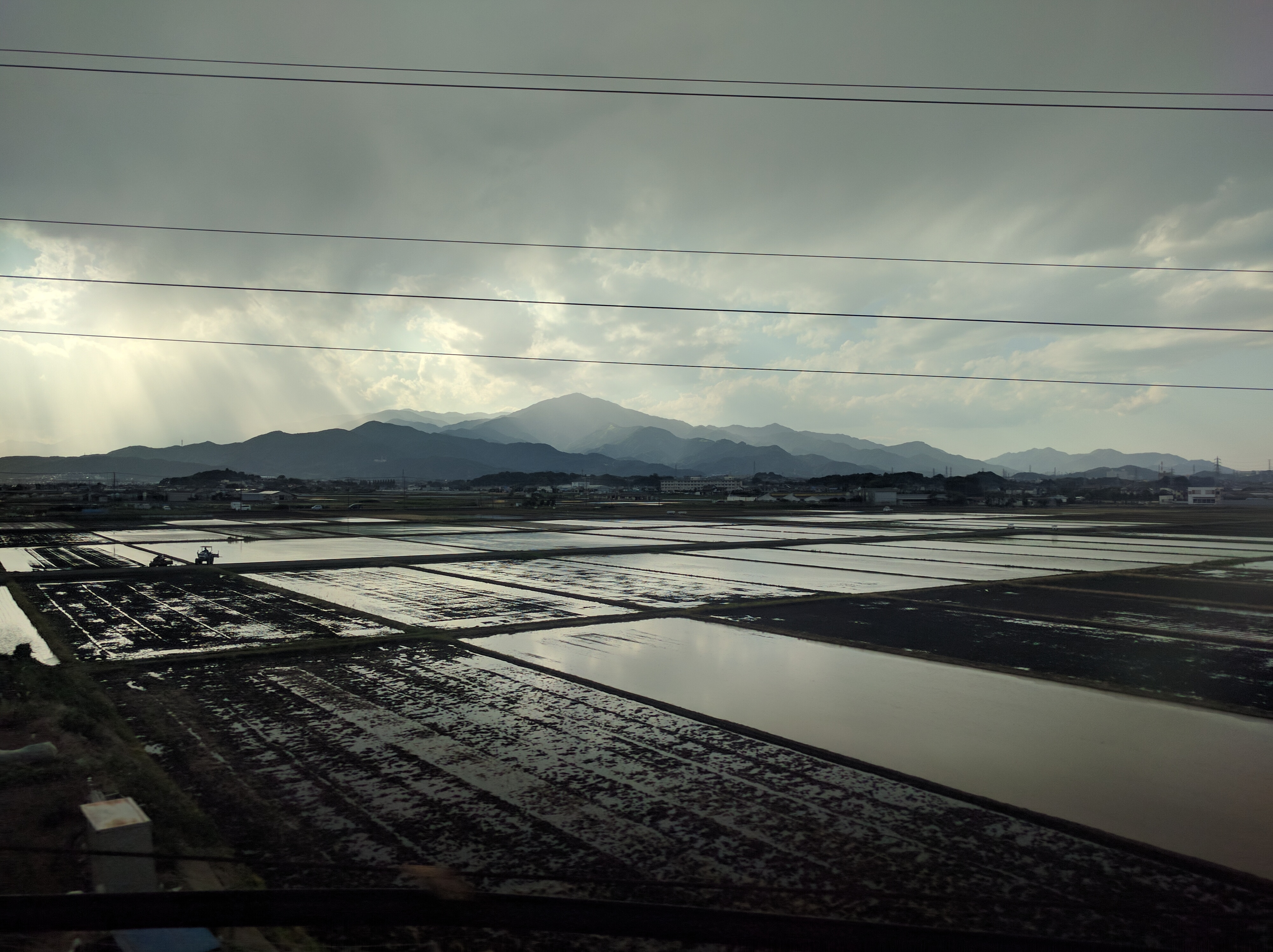
As I ride the Shinkansen through the countryside, a myriad of urban and rural, cities and villages pass by. Forest contain trees with leaves, connifers and their needles, interspersed with rivaling stalks of tall bamboo.
Busses
Busses can be crowded. Enter from the rear, and exit near the front. People seem to instinctively form a line, somehow knowing that the people in front of them need to get off first. I don't have this same instinct.
Flights
When you first arrive at the Japanese airport you'll need to walk through an area with infraret cameras picking up your body temperature and where all the guards wear air masks. Honestly, it feels a bit like a zombie film. (When landing in Hong Kong, the same thing happens, so it's not just in Japan). If they do discovery you have an elevated body temperature, aka are sick, I'm not sure what happens. Perhpas they require you wear air masks yourself.
The food on the Airplane to Japan is much better than anything I've eaten on an American Domestic flight. Really, everything about international flights are better than domestic flights.
Food
Ramen
Ramen is probably my favorite dish (though it's close when compared to Indian and Phở). While in Japan, I averaged eating slightly more than one bowl of Ramen per day. Some Ramen shops offer small disposable bibs which can be unfolded and hung around your neck, which is perfect for slurping.
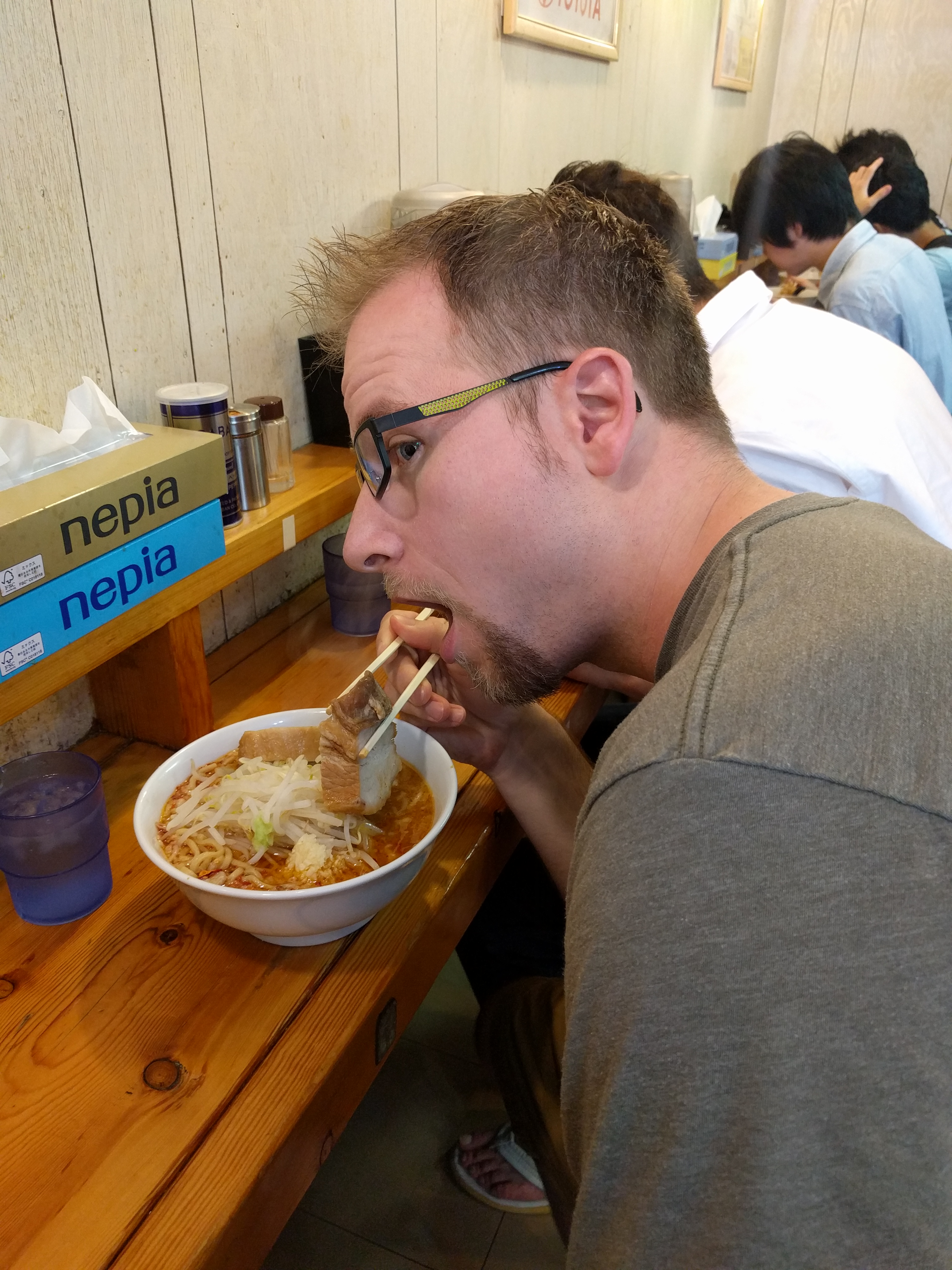
Some Ramen shops have a mechanical machine at the front of the shop where you can select food and input money. The machine then outputs a coupon which you hand to a cook to prepare. In shops like these you seat yourself and each dish arrives as soon as it's ready. This is great because food runners and hostesses aren't needed, and cooks don't have to worry about counting money. Compared to the States, this process is much quicker and more convenient. Unfortunately, with the barbarian practice of tipping being so popular, I don't see machines like this being implemented in the States.
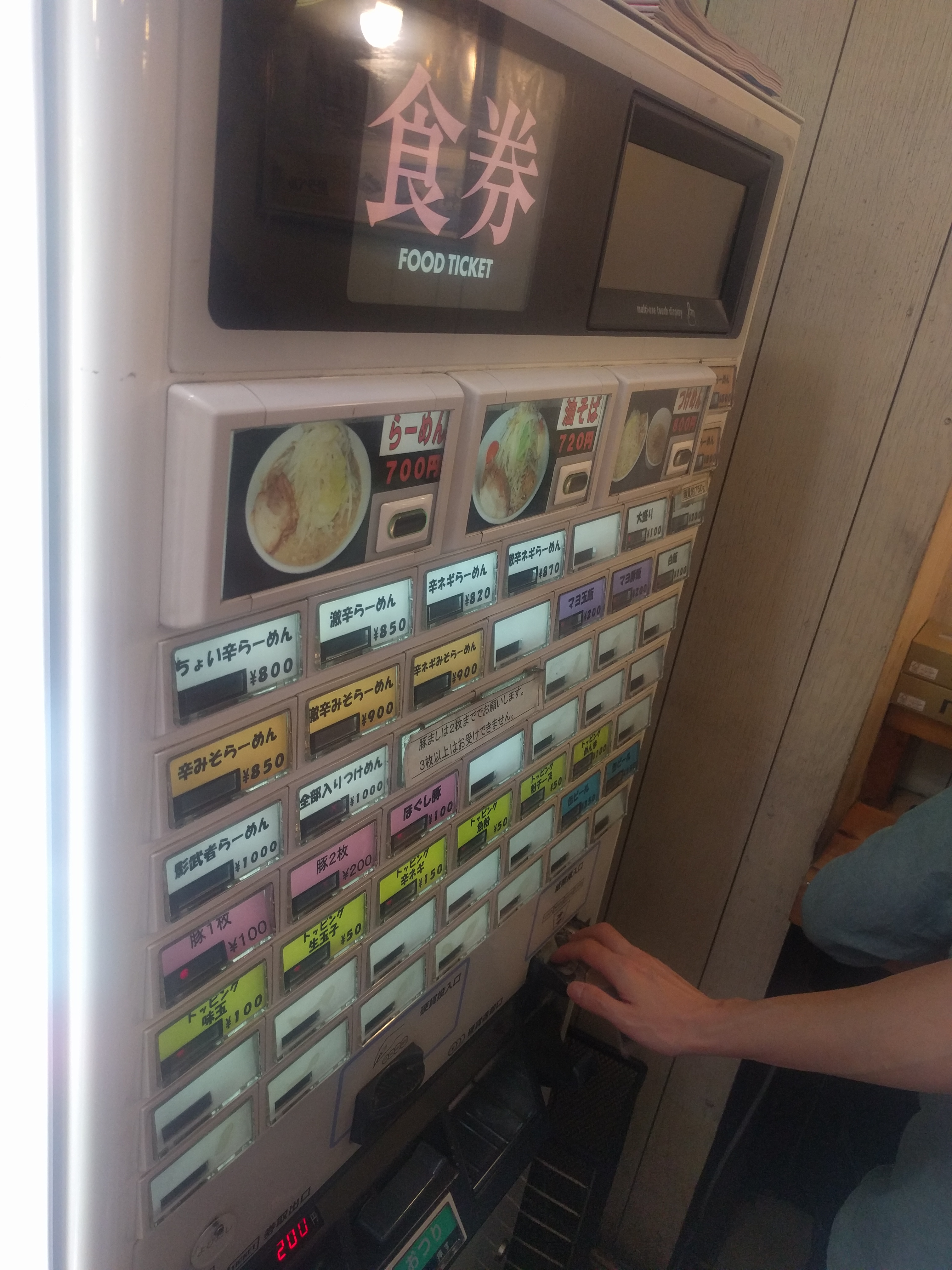
Curry
Japanese Curry is another dish I frequently enjoyed during this trip. The dish comes with a portion of rice, as well as slightly spicy curry meat sauce. Much like Ramen, this is by no means a healthy dish, but its ability to give the consumer diabetes is only rivaled by its flavor.
Whale
Sorry! I did indeed consume whale while visiting Japan. The restaurant which served whale seemed to only have three dishes, namely whale steak, friend whale (Karaage), and another one I didn't pay attention to. My Whale Karaage cost about $12, and tasted sort of like a greasy beef steak. I've never been a big fan of meat dishes, so while it was neat to try Whale, I doubt I'll ever have it again.
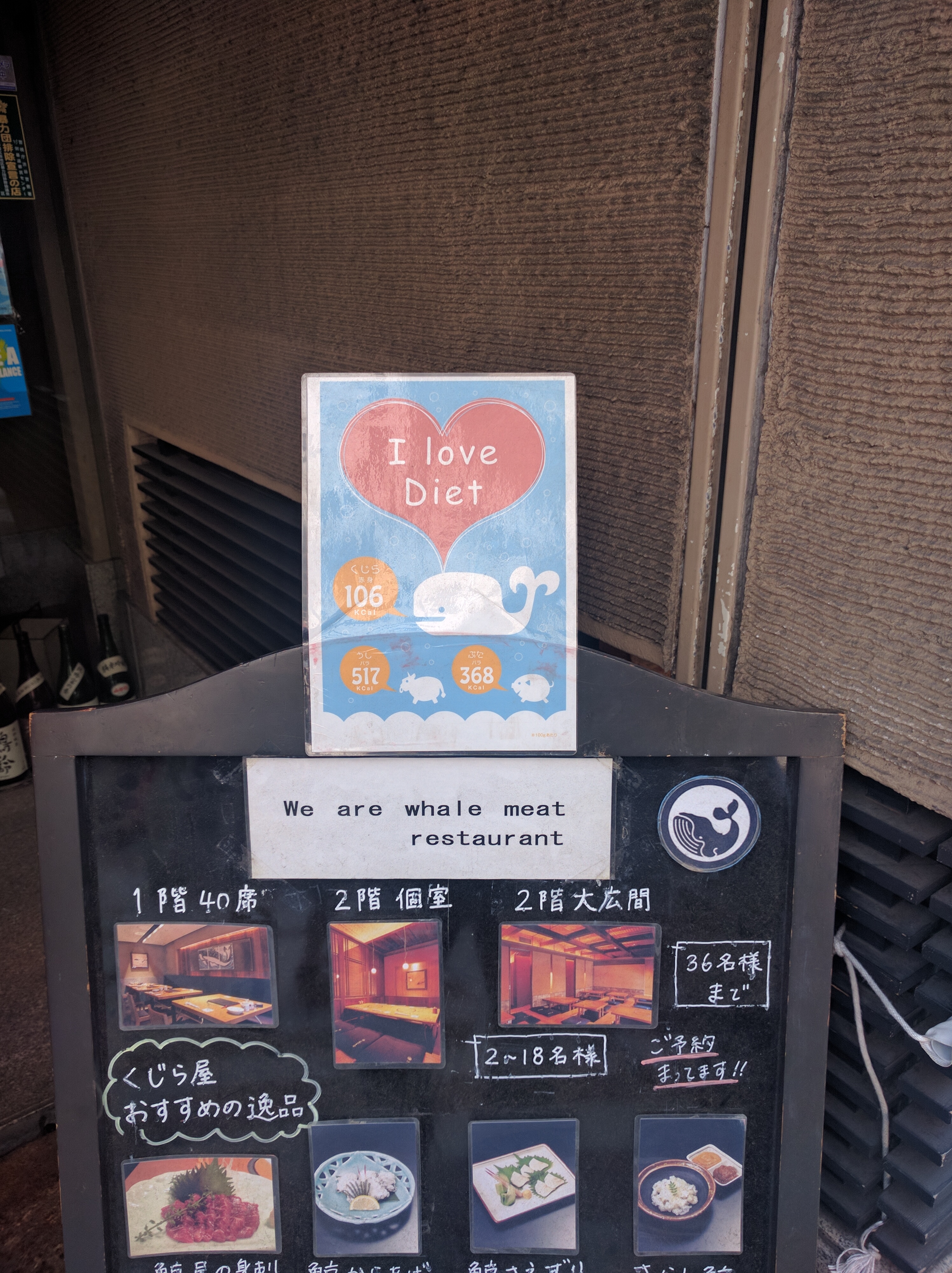
Sushi
Normally I'm not a fish eater, and I usually avoid consuming Sushi while in the States, though I have had it several times in the past. While in Zushi, Daigo and I went to a small Sushi shop near his family's home. The Sushi tasted surprisingly well, and I assume the fish was caught earlier that morning.It was prepared in front of us, piece by piece, by a man who's been making Sushi for most of his life. This amazing Sushi meal only cost about $13 USD per person and included fish which I can only assume were caught this morning.
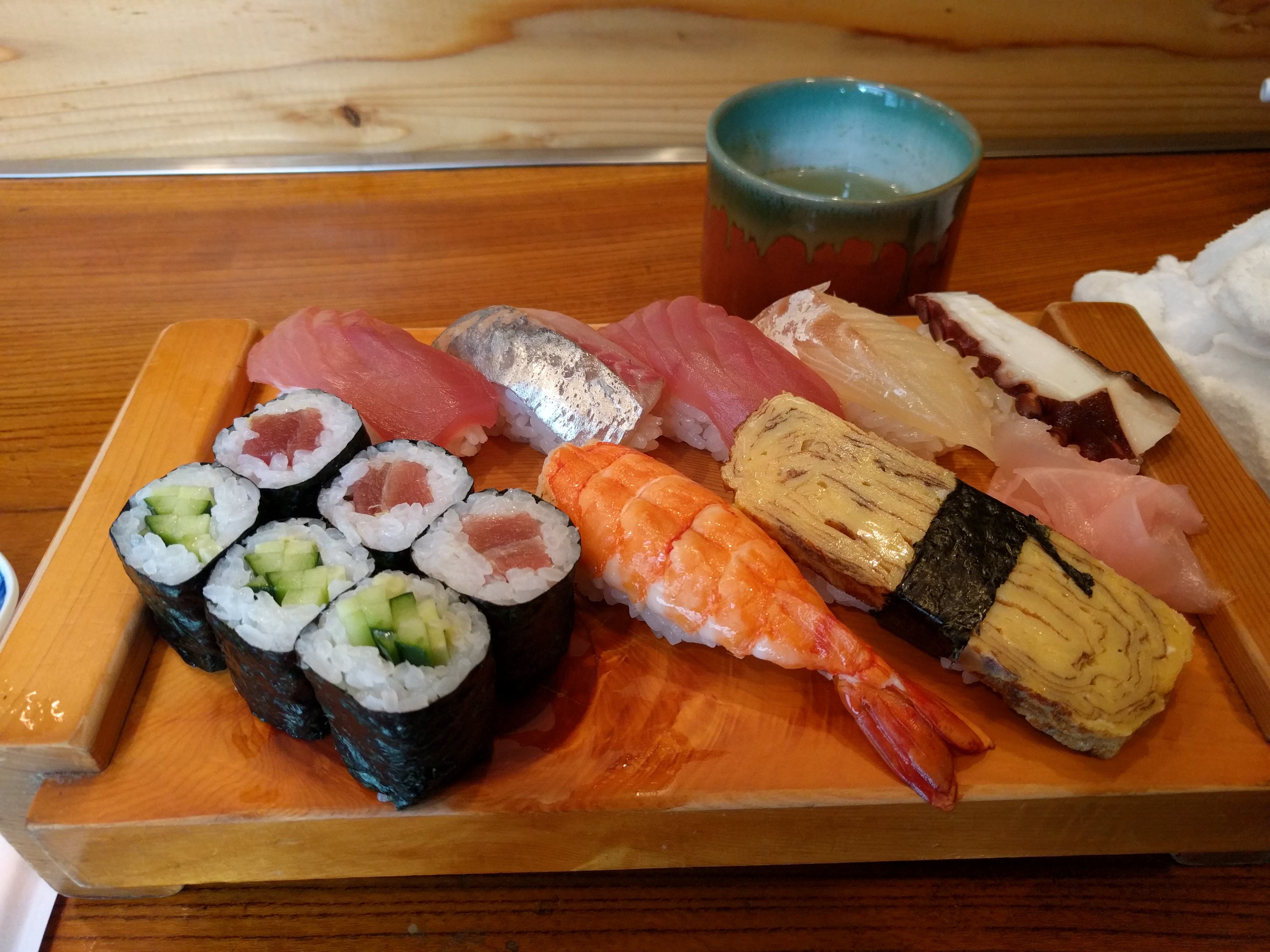
Buildings
Yokohama City Home
Electronics permiate the life of a typical Japanese citizen much more deeply than that of an American. My friends family house has electronic devices built into the walls, utilities which help the house function. The most interesting one to us Westerners is of course the toilet.
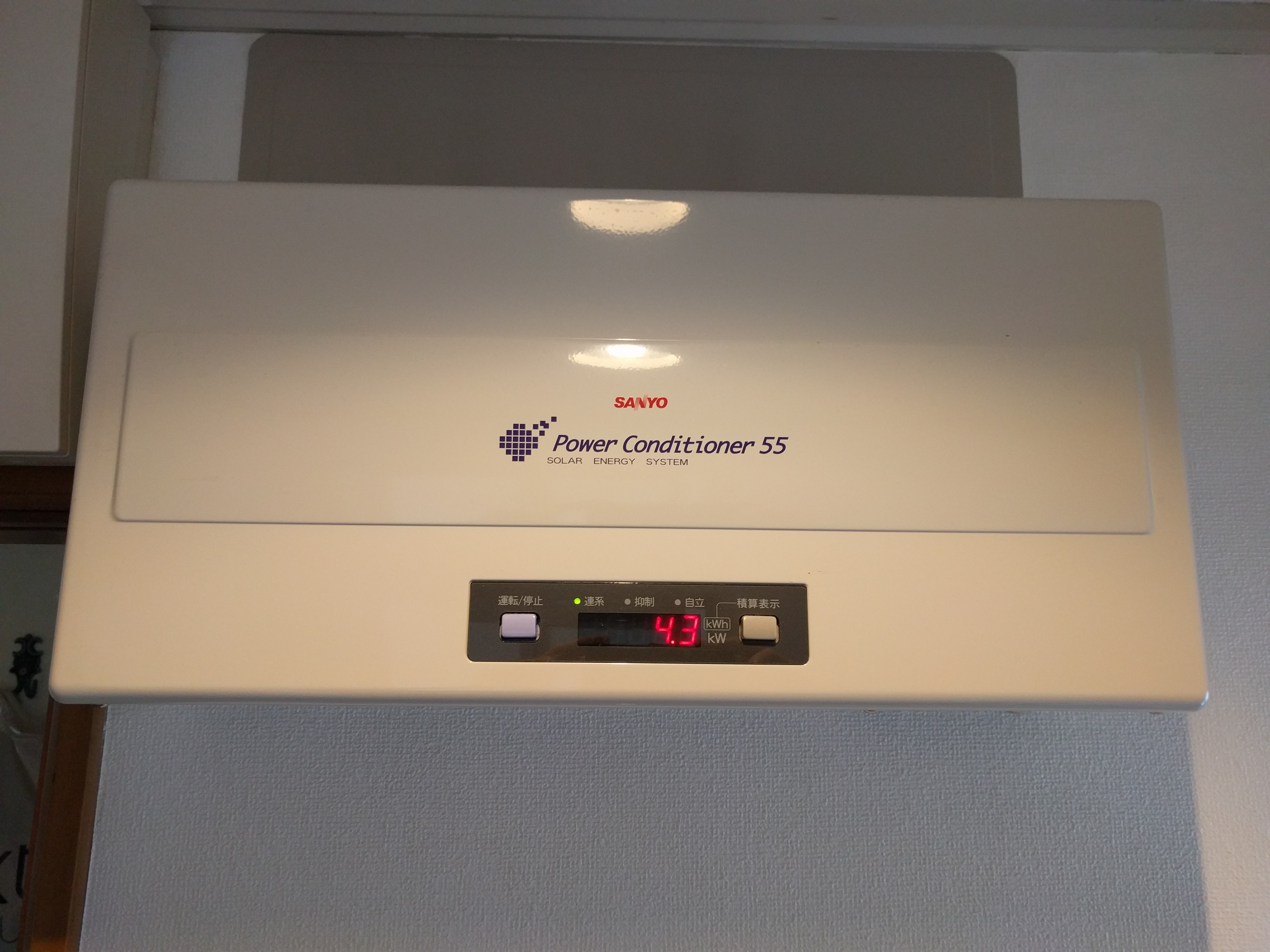
An electronic Japanese toilet has a bidet built in, a device which cleans your ass by spraying water into it. The toilet has a complex control panel, with bidet options for weak, strong, and a special woman-only option. The toilet is also heated (on a programmable schedule), has a liquid and solid flush option, and can play noises to muffle the awkward sound of gassey shits. Waterclosets and Bathrooms are separated in Japan, where the former is used for defacation and the latter for bathing / getting ready in the morning. Basically, a guest doesn't need to use your Bathroom, only the WC.
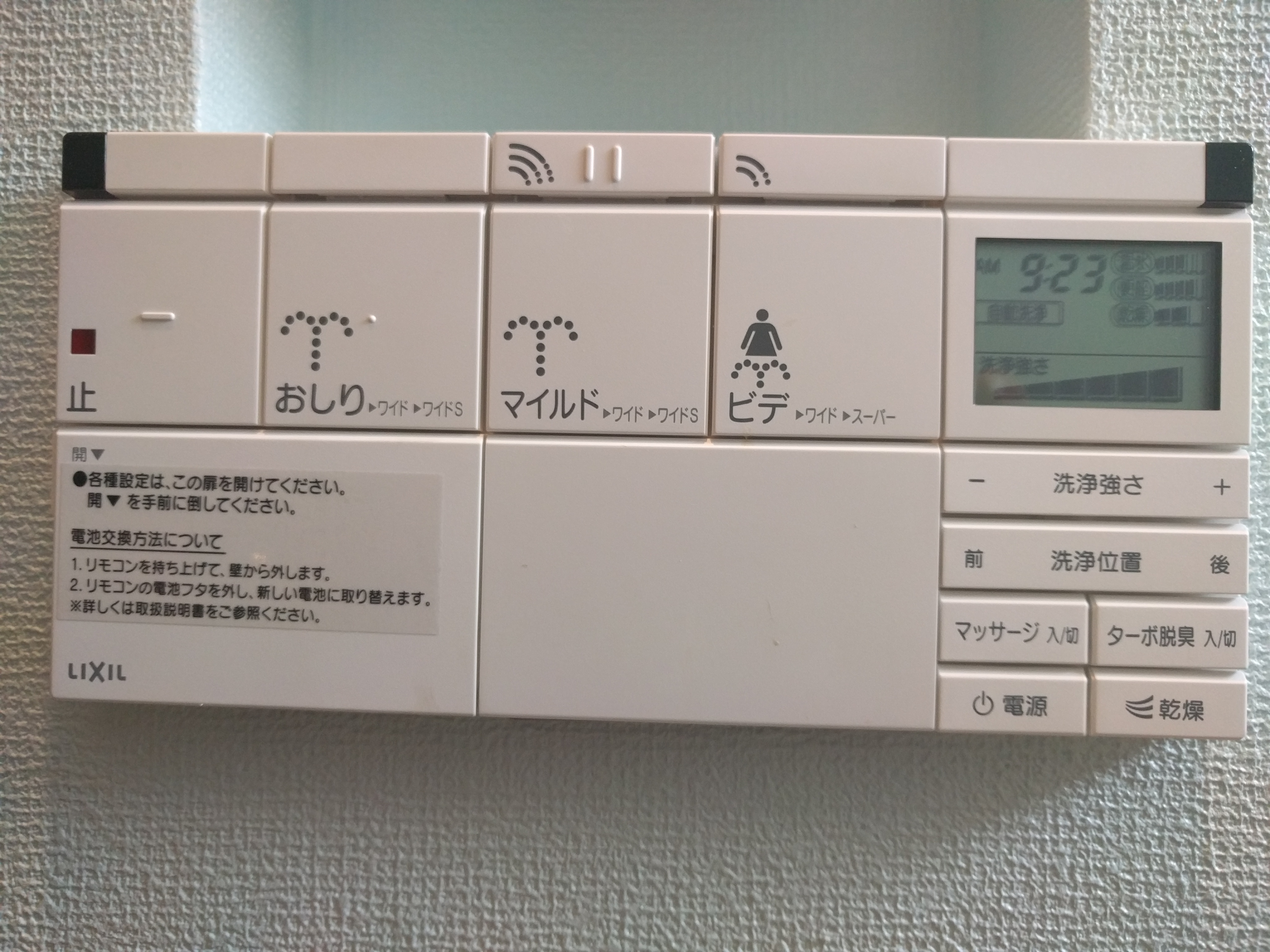
Another device I found particularly interesting is the control panel for the Solar Panels on the roof. Daigo clicks through the menus and shows me a screen where animated penguins explain that a certain amount of wattage is being sold to the grid.
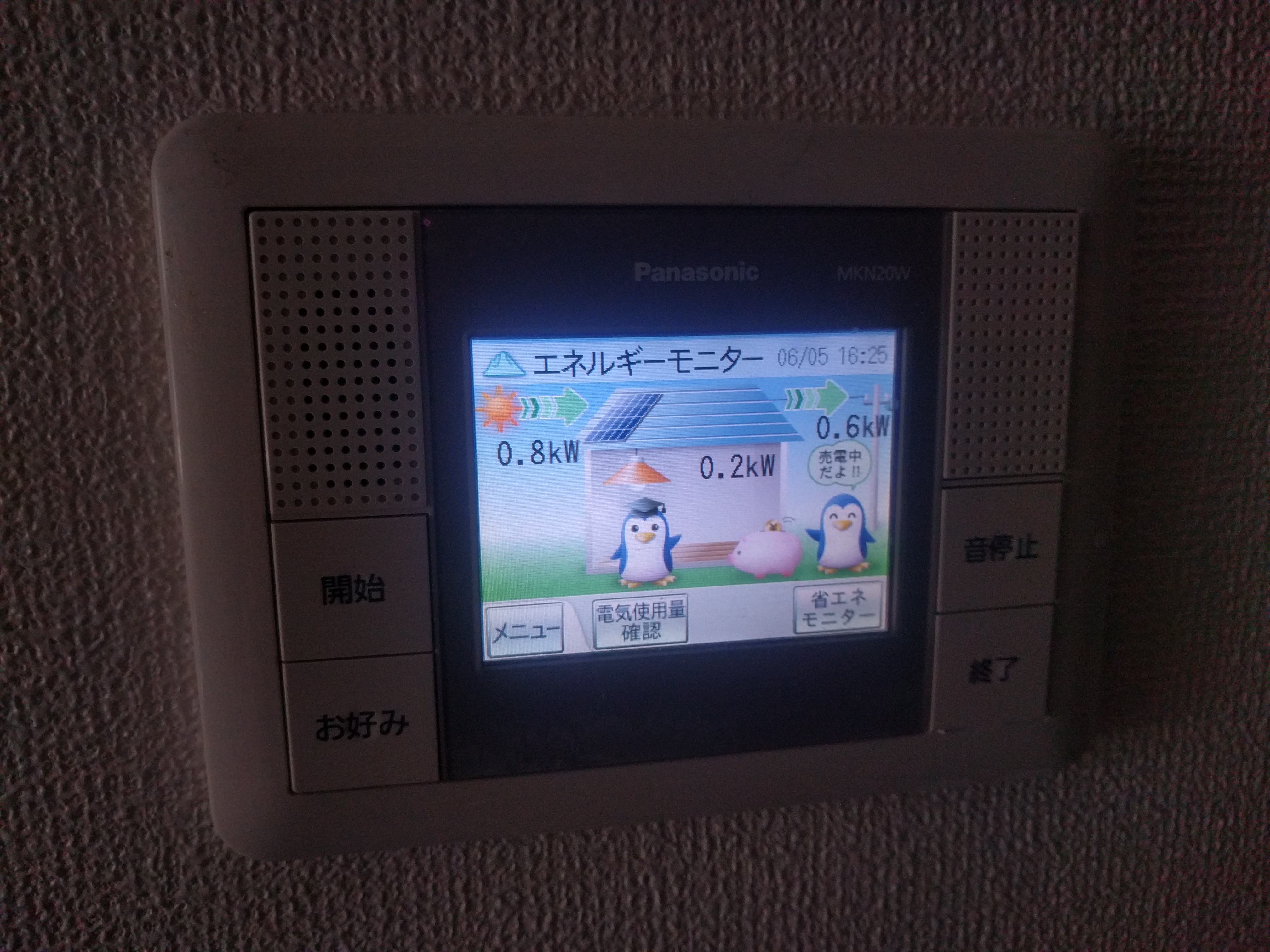
This house also has two small patios, one a bit too small to stand on, the other one adorned with plants and a place to dry wet clothing and a place to smoke.
The house is two stories, with the bottom story being home for Grandma. The bedroom I stay in belongs to Daigo's brother, Fumio. I soon realize that I've essentially kicked Fumio out of his bedroom. Sorry Fumio!
Yokohama City Apartment
In the Yokohama apartment, which is across the street from the Yokohama Stadium, the walls are so thick that one cannot tell there is a baseball game being played next door. The apartmnet is very thin, perhaps 10ft wide, and of normal length, perhaps 30ft. The main room is a kitchen, dining room, and the far end with a blanket and pillow is the bedroom. The fridge is half the dimensions of a normal American fridge, and the rest of the kitchen is also dwarved.
Still, in a small space-saving apartment such as this, the Bathroom and Watercloset remain separated.
On one of the walls is a door buzzer with a video feed to the outside.
Rural Home
This home went through some recent renovations, including adding a “pit” beneath the table so that people can sit down on the floor. This is much appreciated by those of us who can't cross our legs. This home is very old, the sort of stereotypical Japanese house with bamboo floors and thin paper walls that one could accidentally puncture.
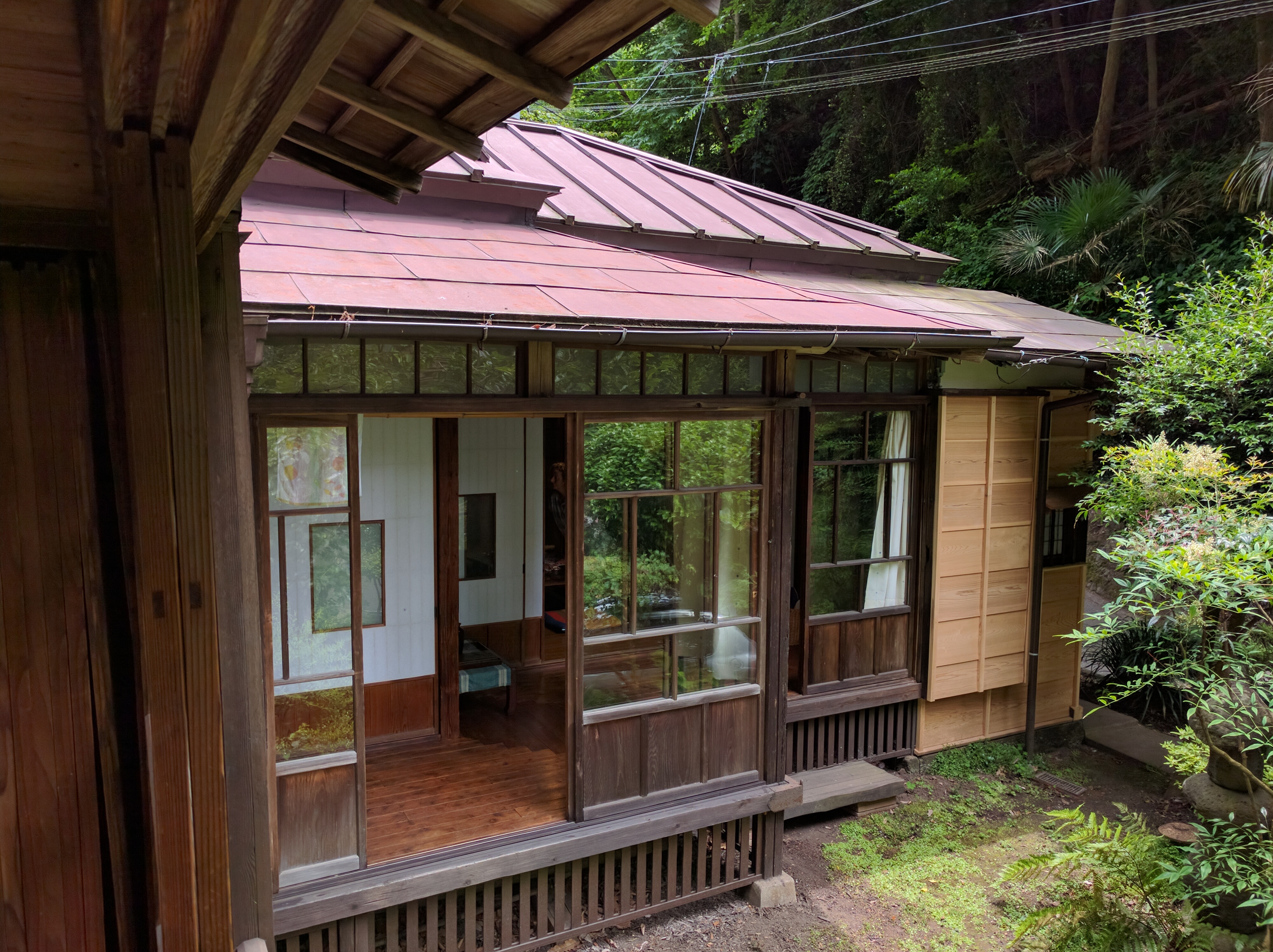
Outside the house a killer bee flies within a few feet of my face. I think it looks funny (sort of resembling a flying submarine) and point at it, an act which I'm told (along with all movement) should be avoided in the future.
Mega Malls
There are many massive “malls” throughout Japan, following the same pattern of being about eight floors tall, though I'm not sure if the ones I visited were all owned by the same company. One of the floors will be dedicated to mobile phones, another to model building, photography, video gaming, comics, household appliances, and food. Each floor is about half the square footage of, say, a Walmart, so the amount of stuff you can buy is insane.
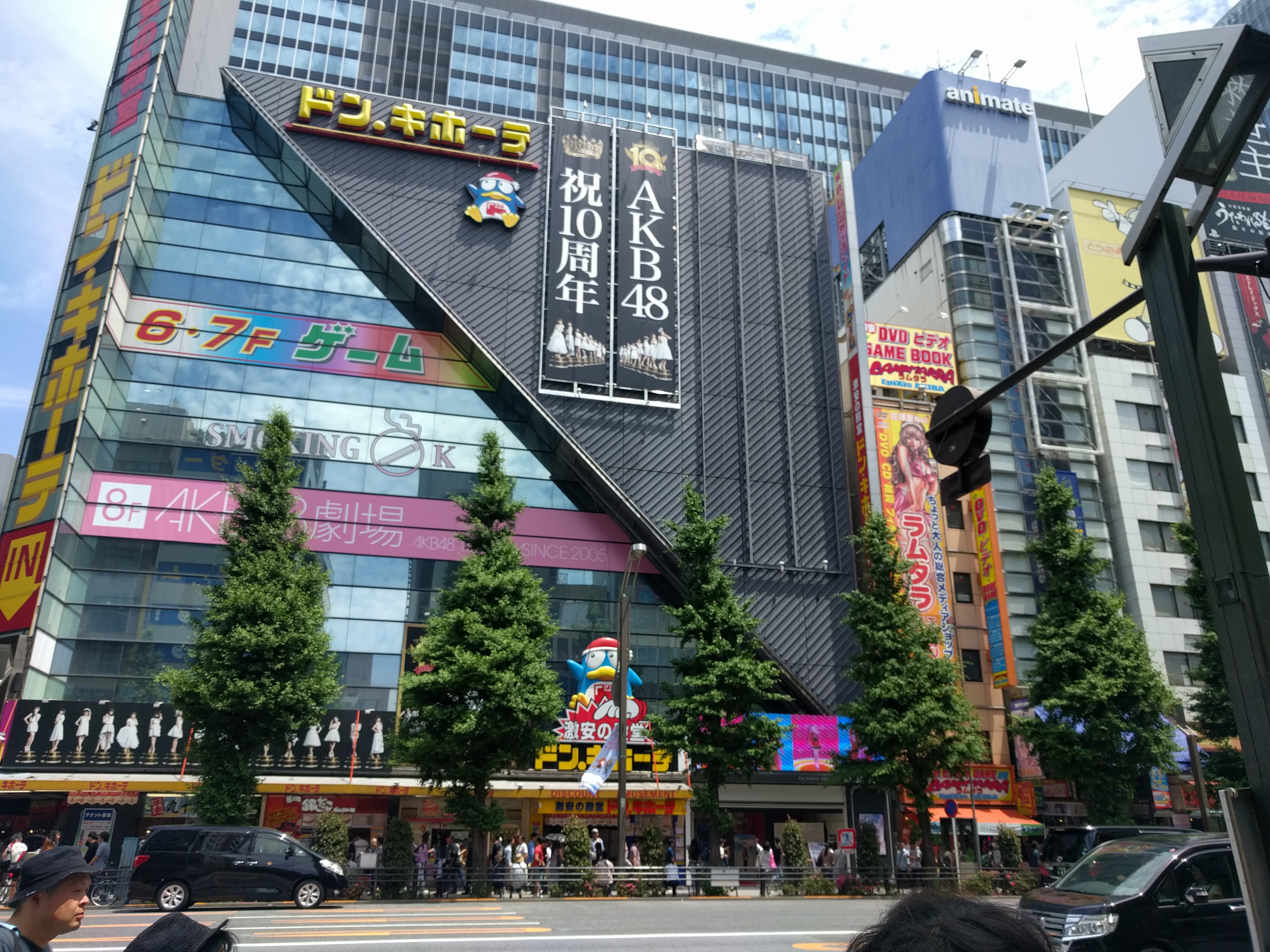
For the most part, these mega malls appear to be just a single sellar, however some of the higher floors would be broken up into obvious separate owners, especially the restaurants. While perusing the keyboard section on the computer floor, I would see many many different types of keyboards, including more obscure ones like tenkeyless Filco's with Blue MX switches. These are higher end keyboards, costing a couple hundred USD, something you'd never find in an American Best Buy.
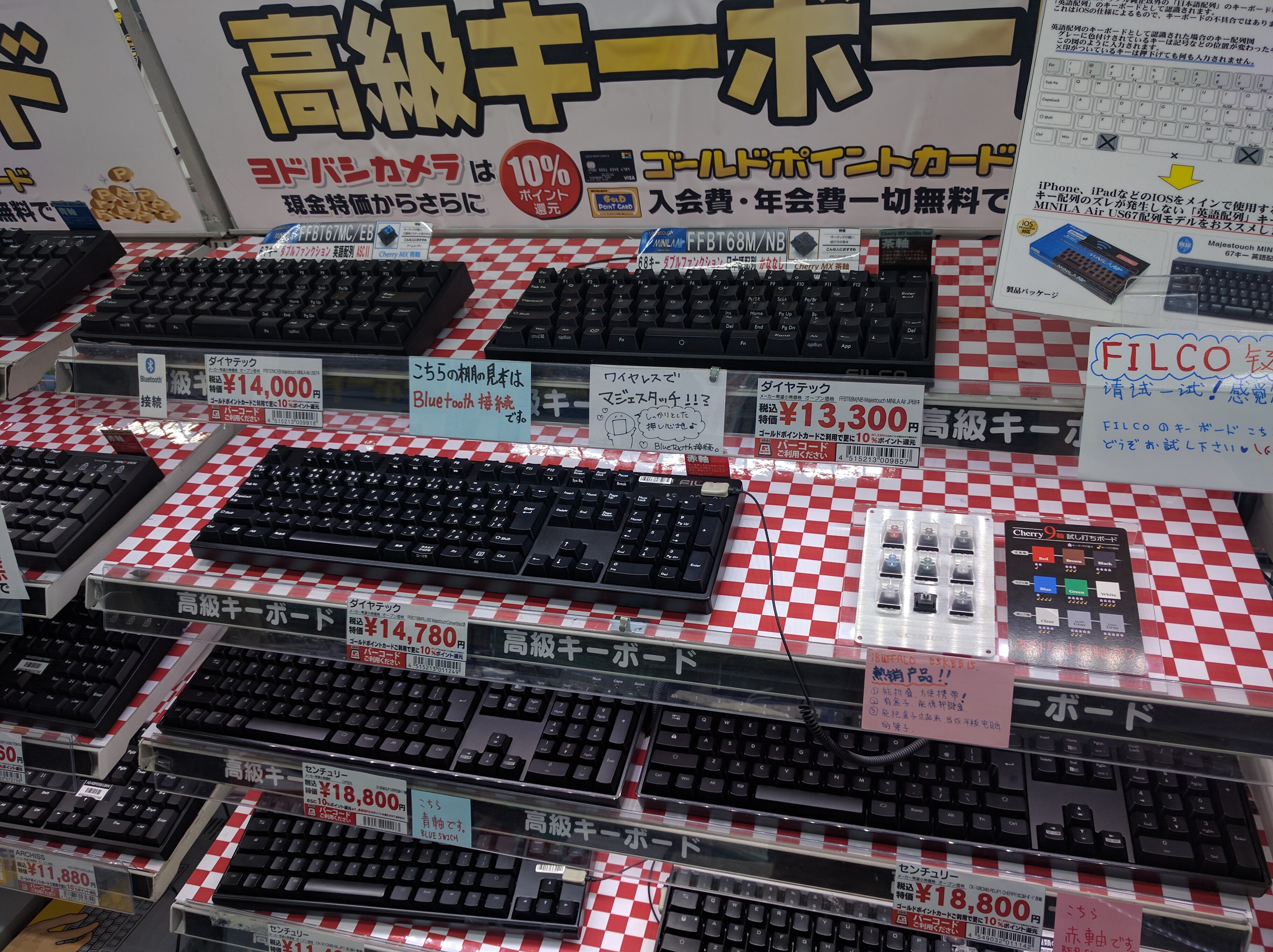
Temples / Shrines
Whenever you go to a Temple you're expected to leave your shoes outside. Some temples provide you with bags you can carry your shoes in, some have lockers, and others just have a large shoe orgy on the front entrance. Orange paint was believed to keep evil spirits away, which is why many of the temples and gates are painted in bright orange.
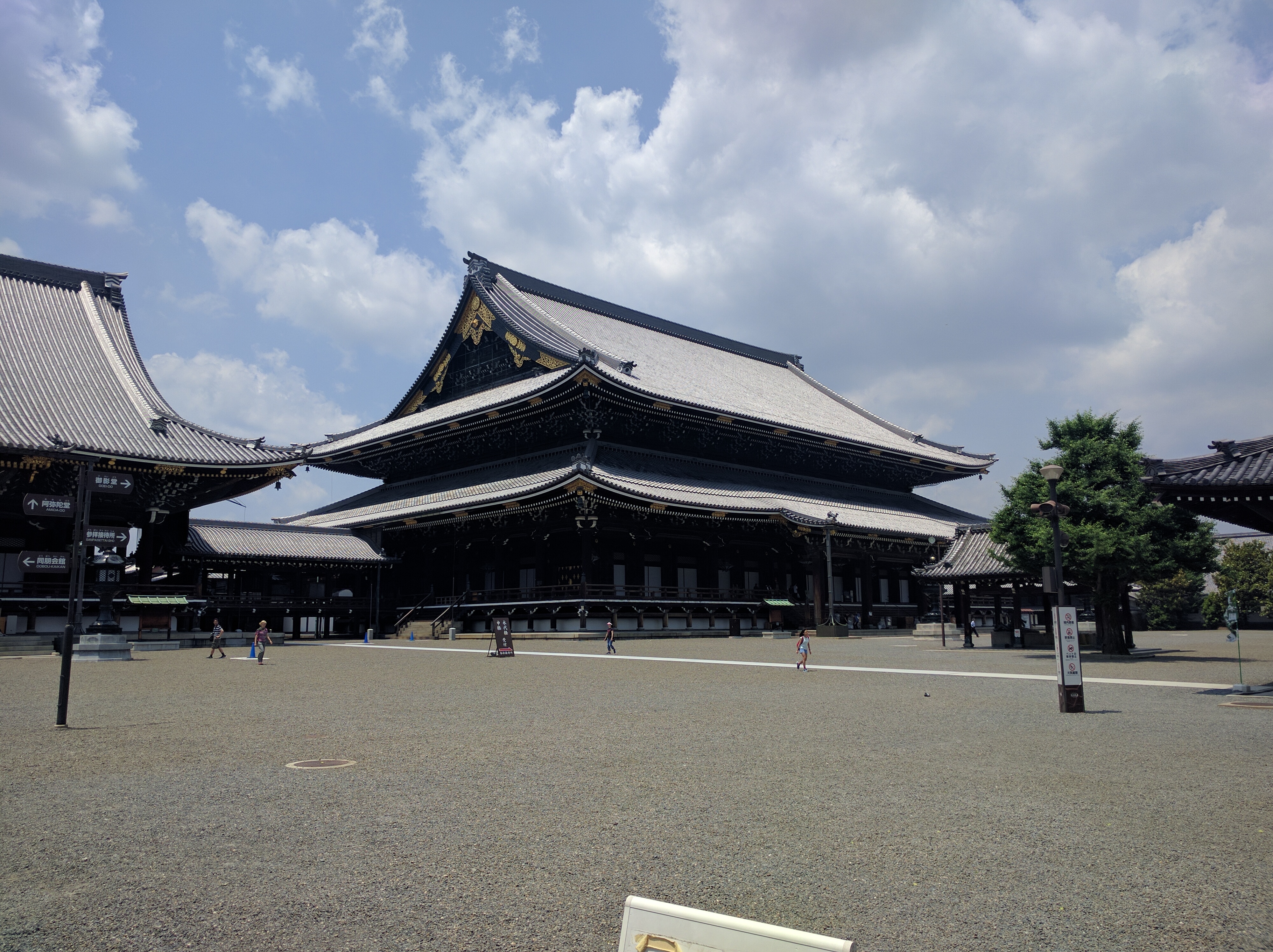
Most of the temples also have paper walls. Admission is usually free, with areas where you can donate. One of the more tourist-heavy temples had an area where you could get a random fortune by shaking a canister full of sticks and pulling one out. I ended up with the worst fortune and was told any relationship I get into now will end horribly, and that any trips I take will end in disaster.
Future Trips
I am in love with Japan. Everything about it seems awesome. I think I could live there. I don't think I could survive working at a Japanese company, though working at a remote US company in Japan could be doable.
I definitely want to return to Japan one day. Heading to the north to the Sapporo area would be cool, spending some more time in Osaka would be nice too. Actually knowing some Japanese would help me get a better feel for what it truly means to be in Japan.